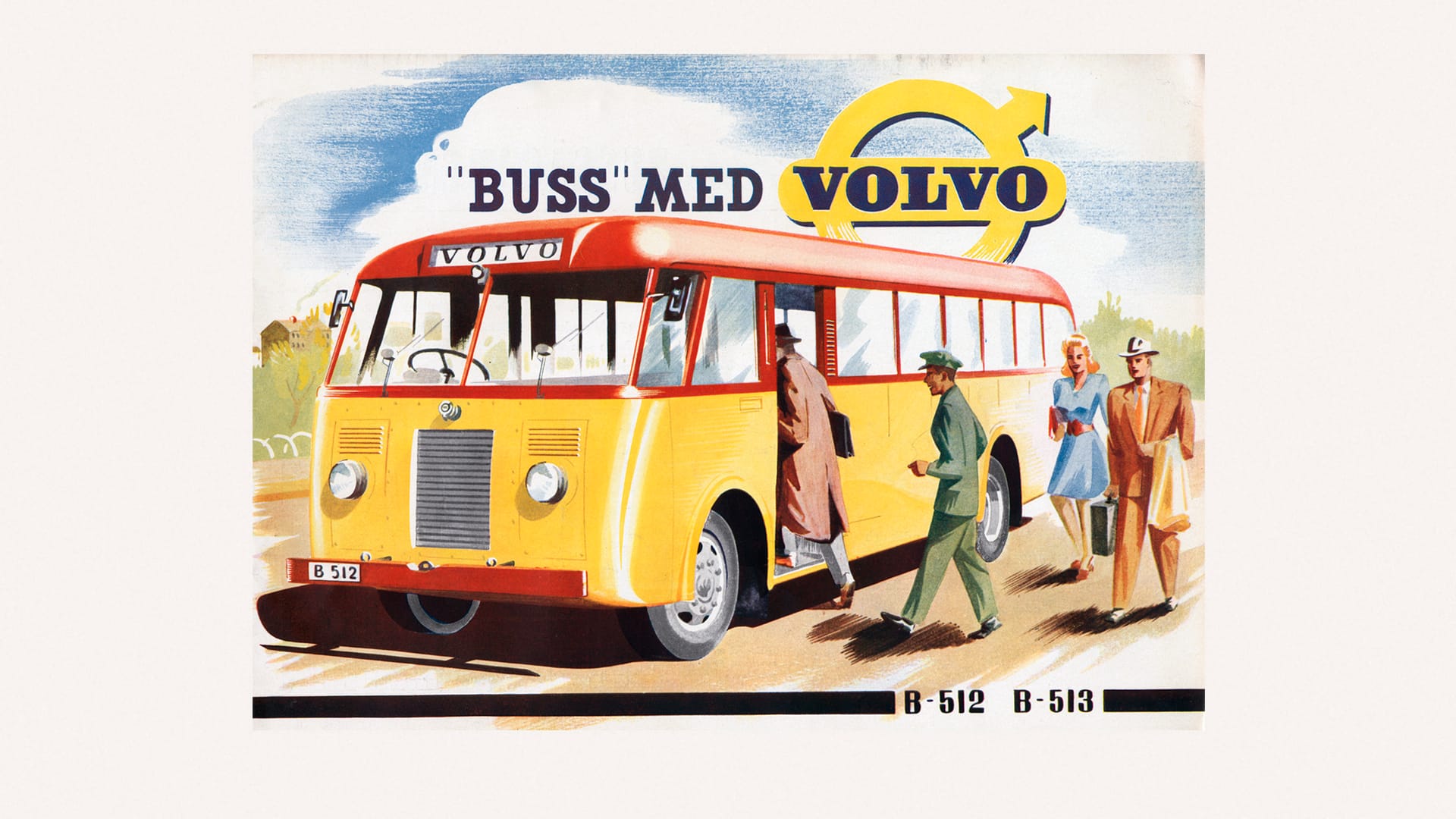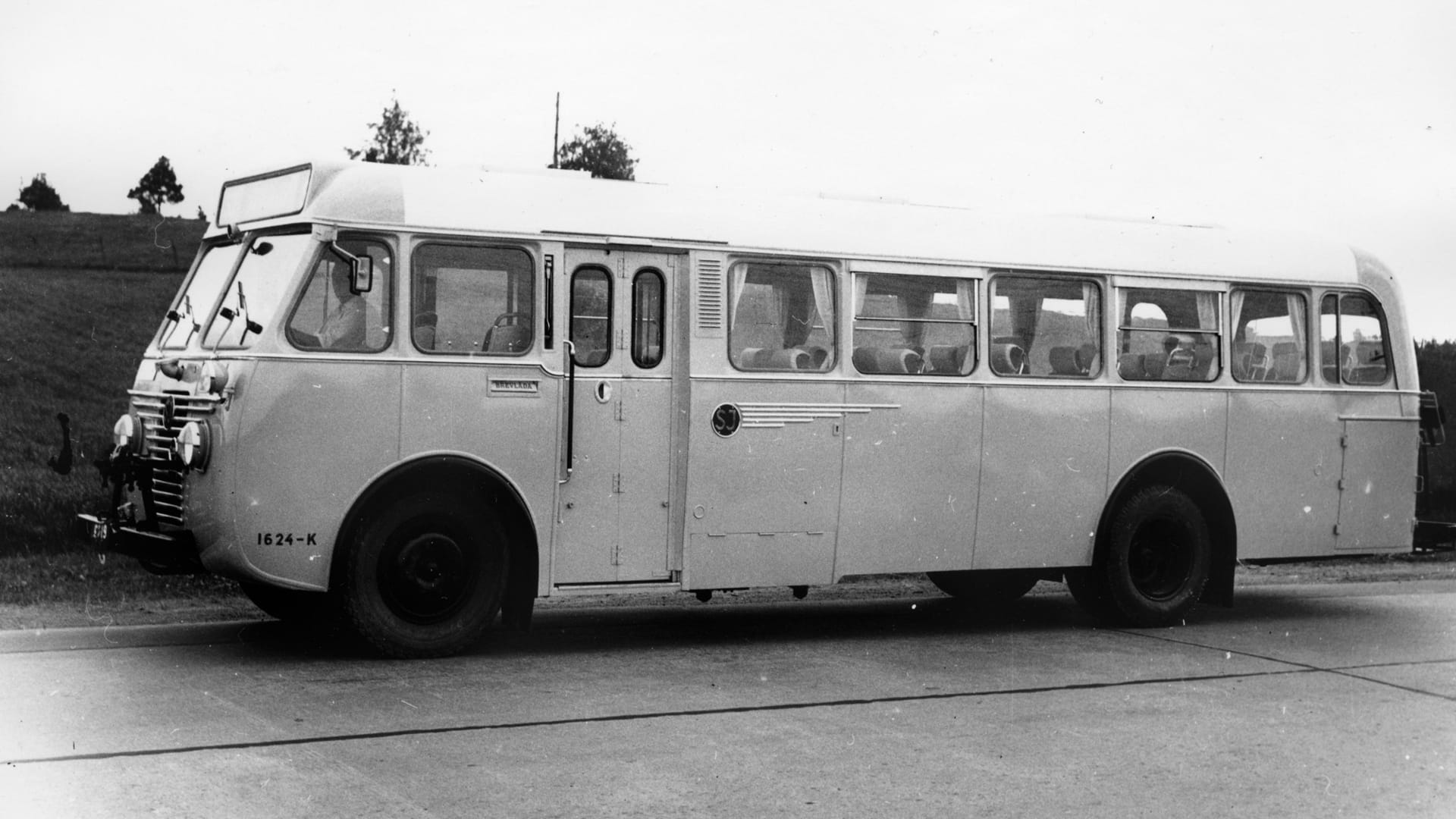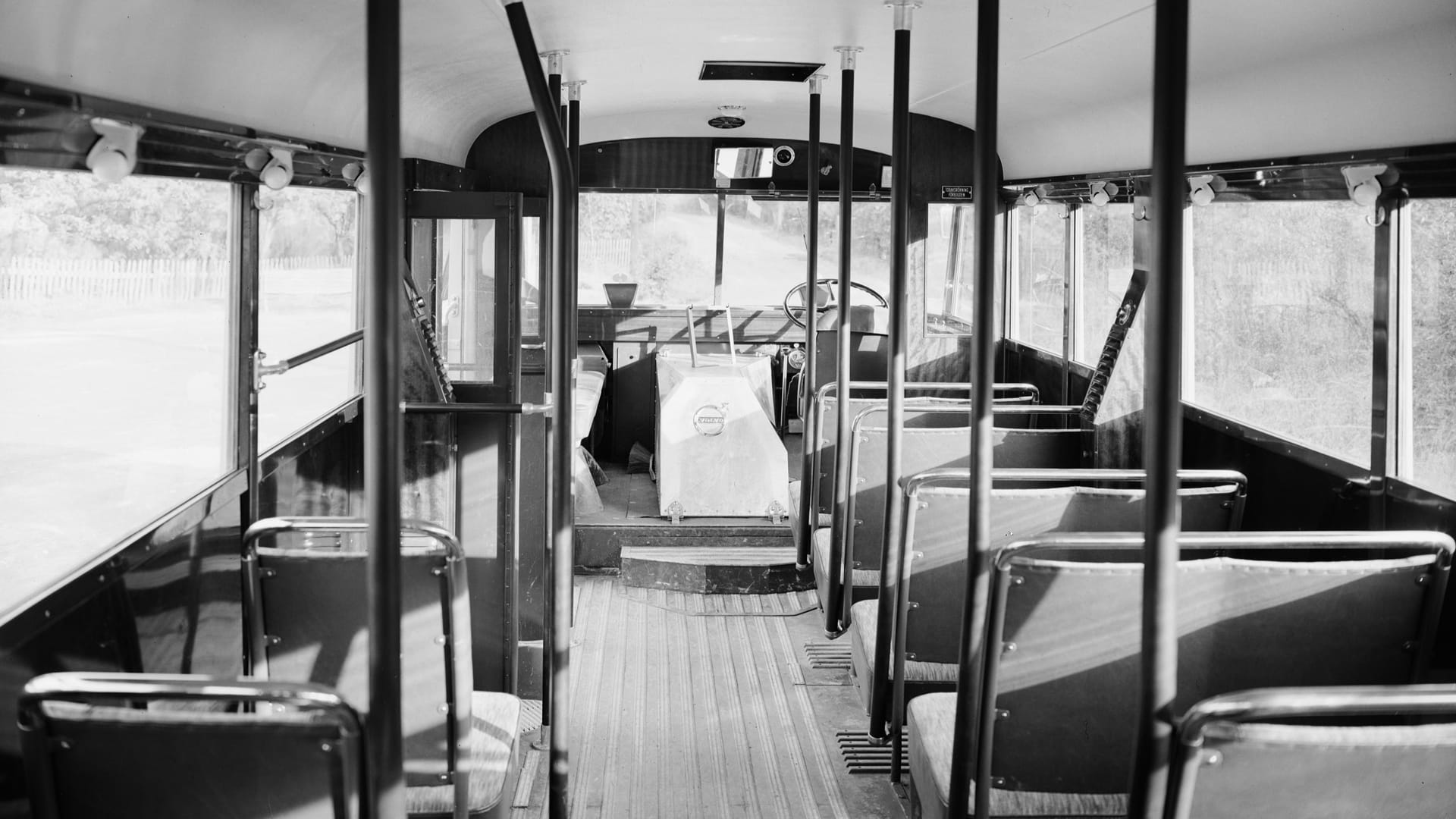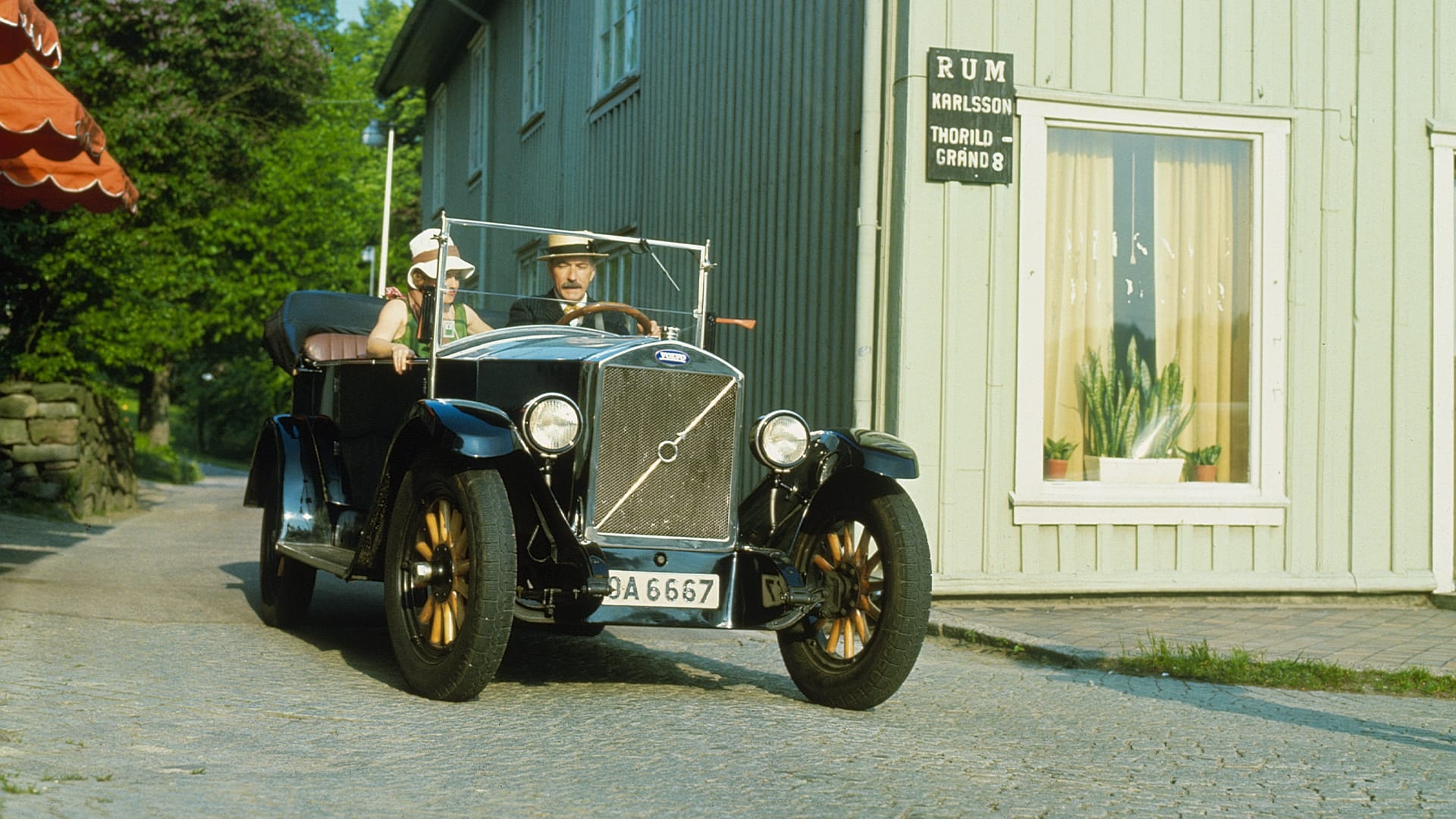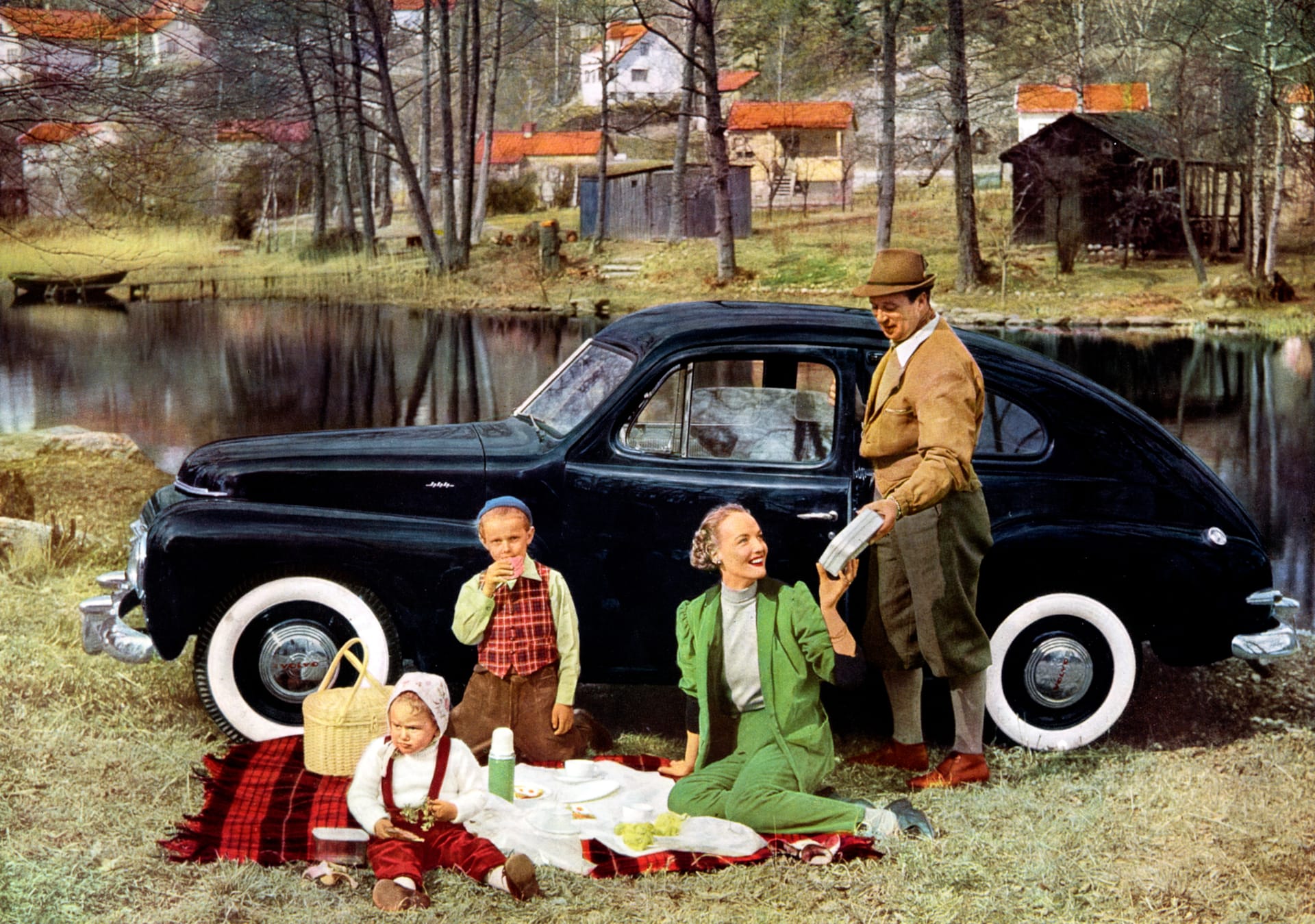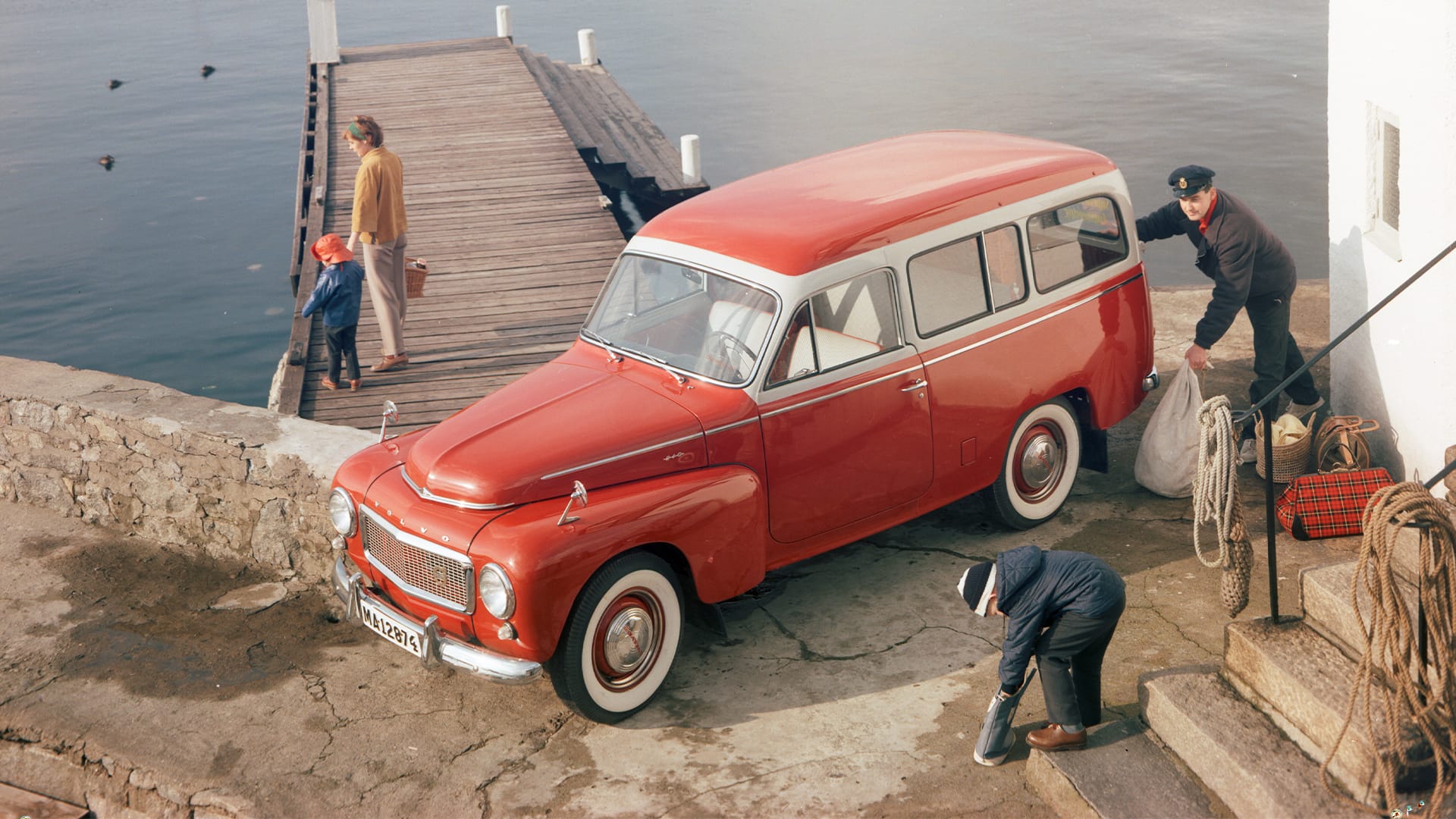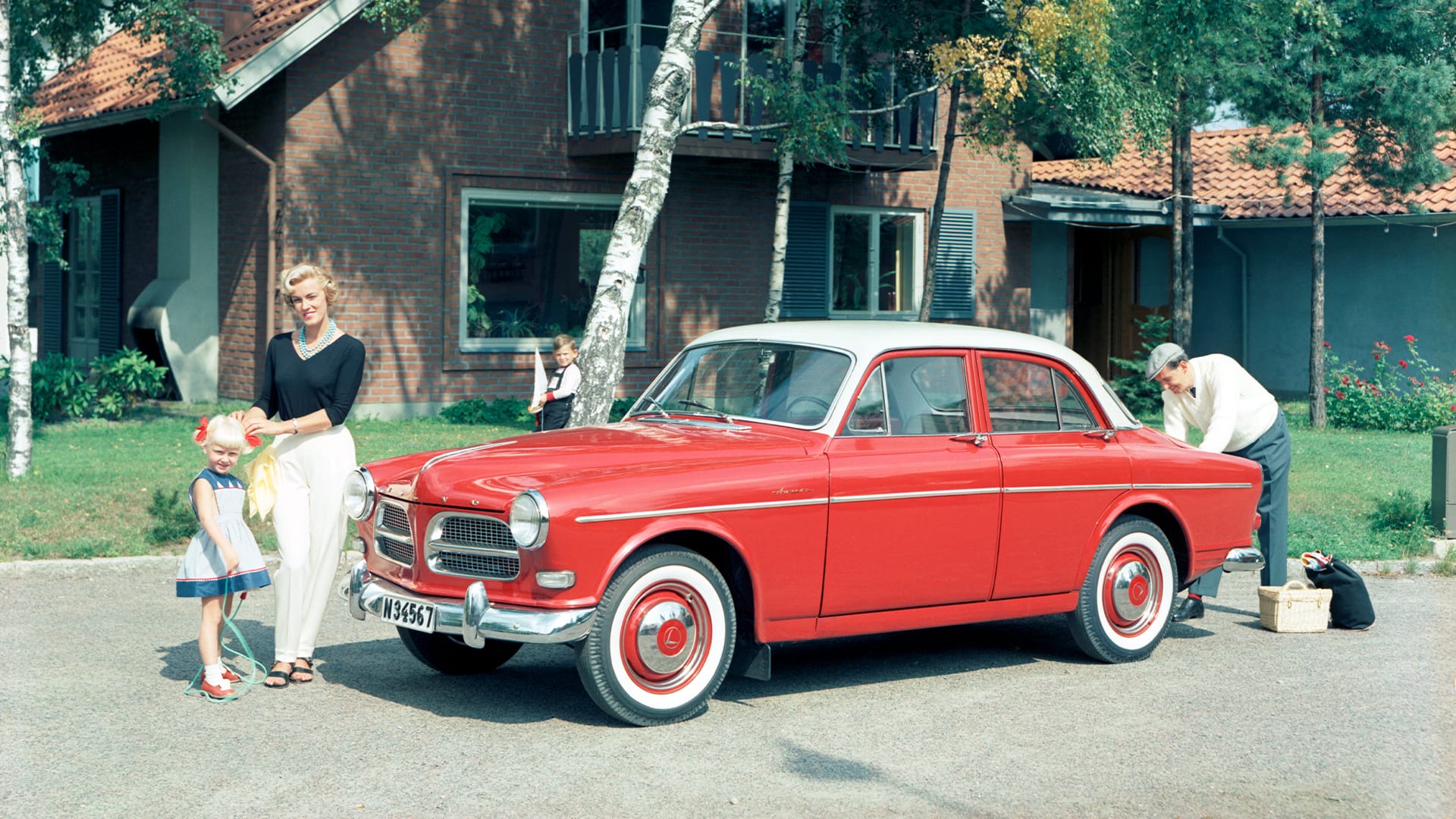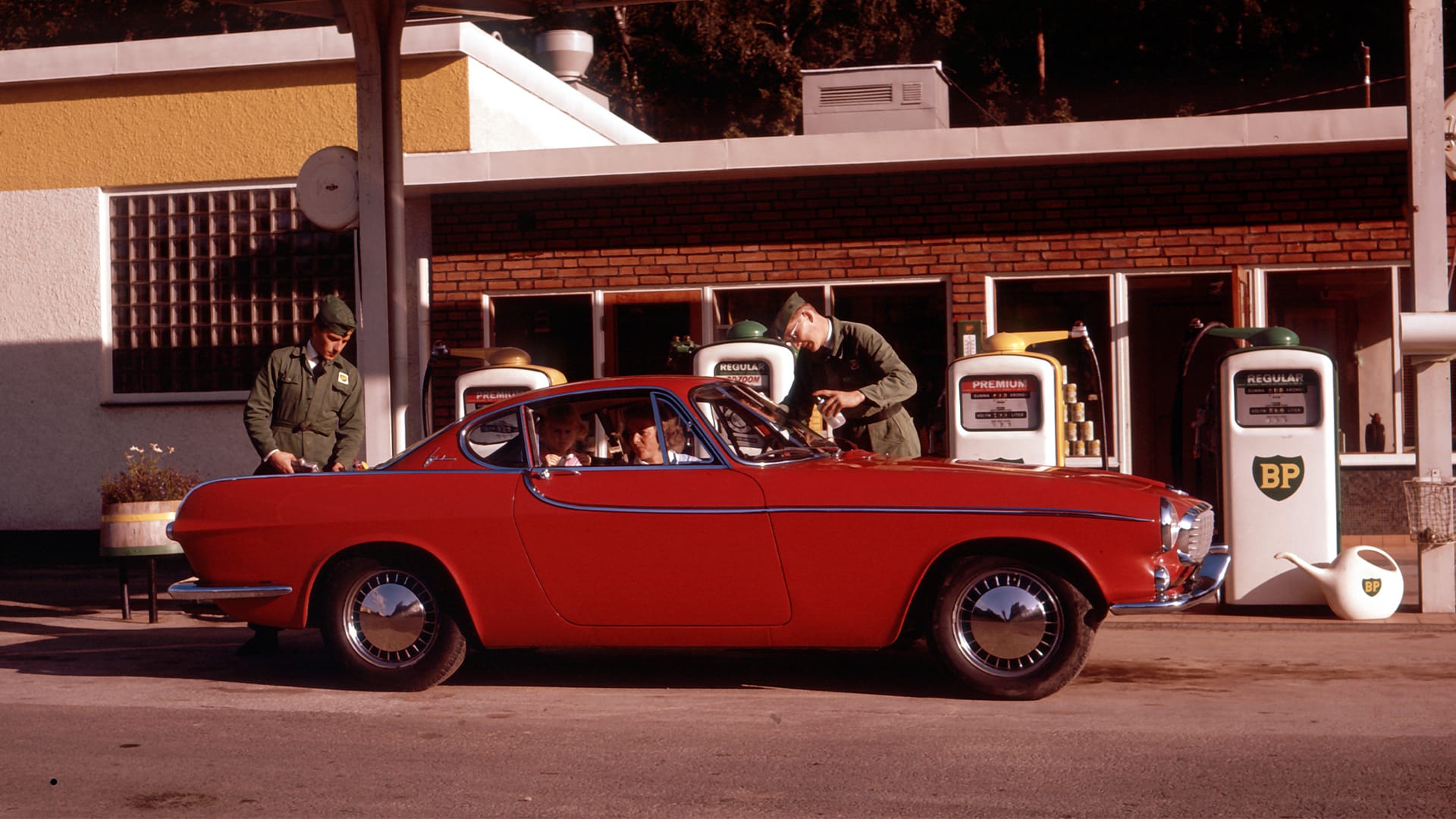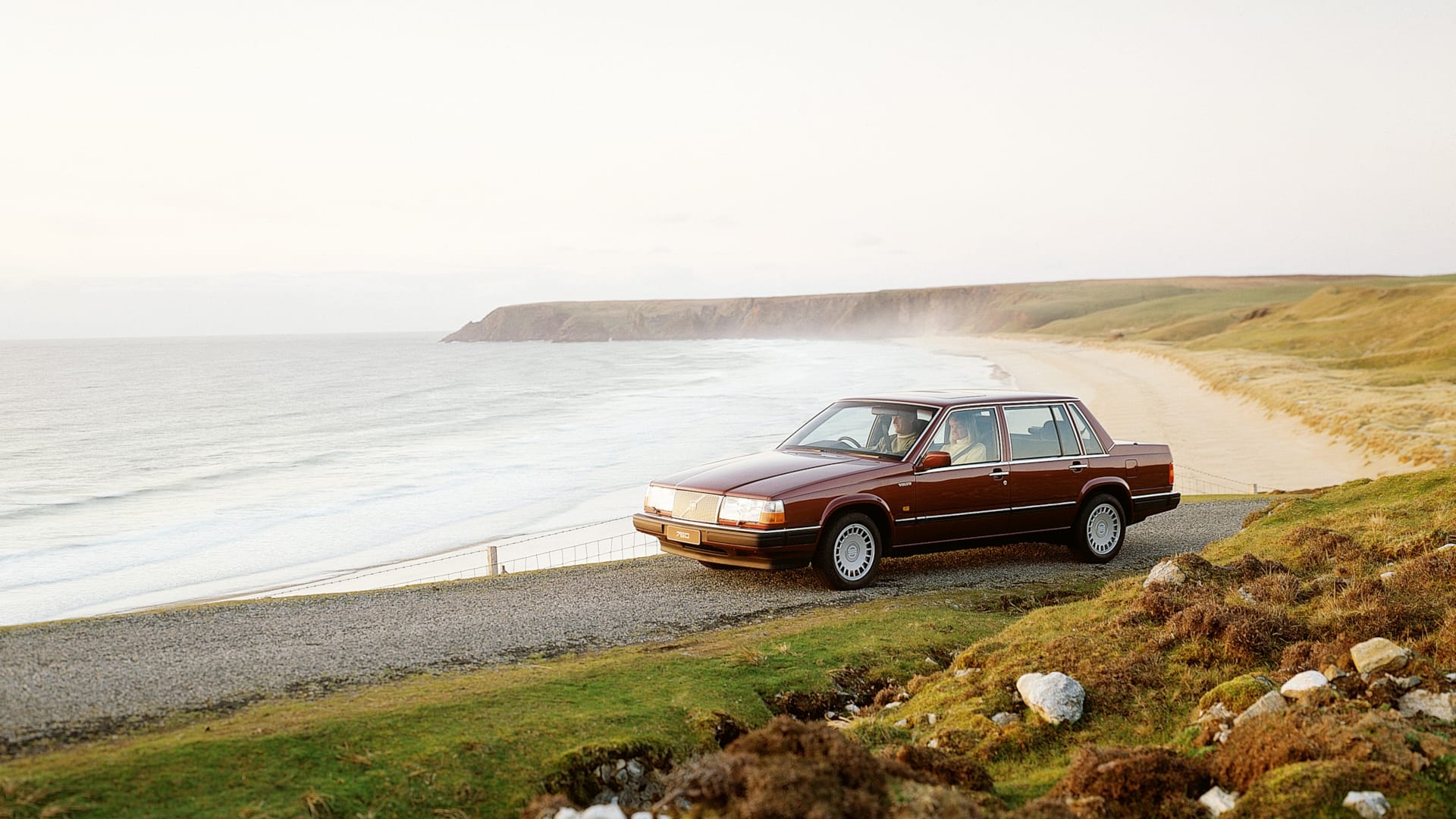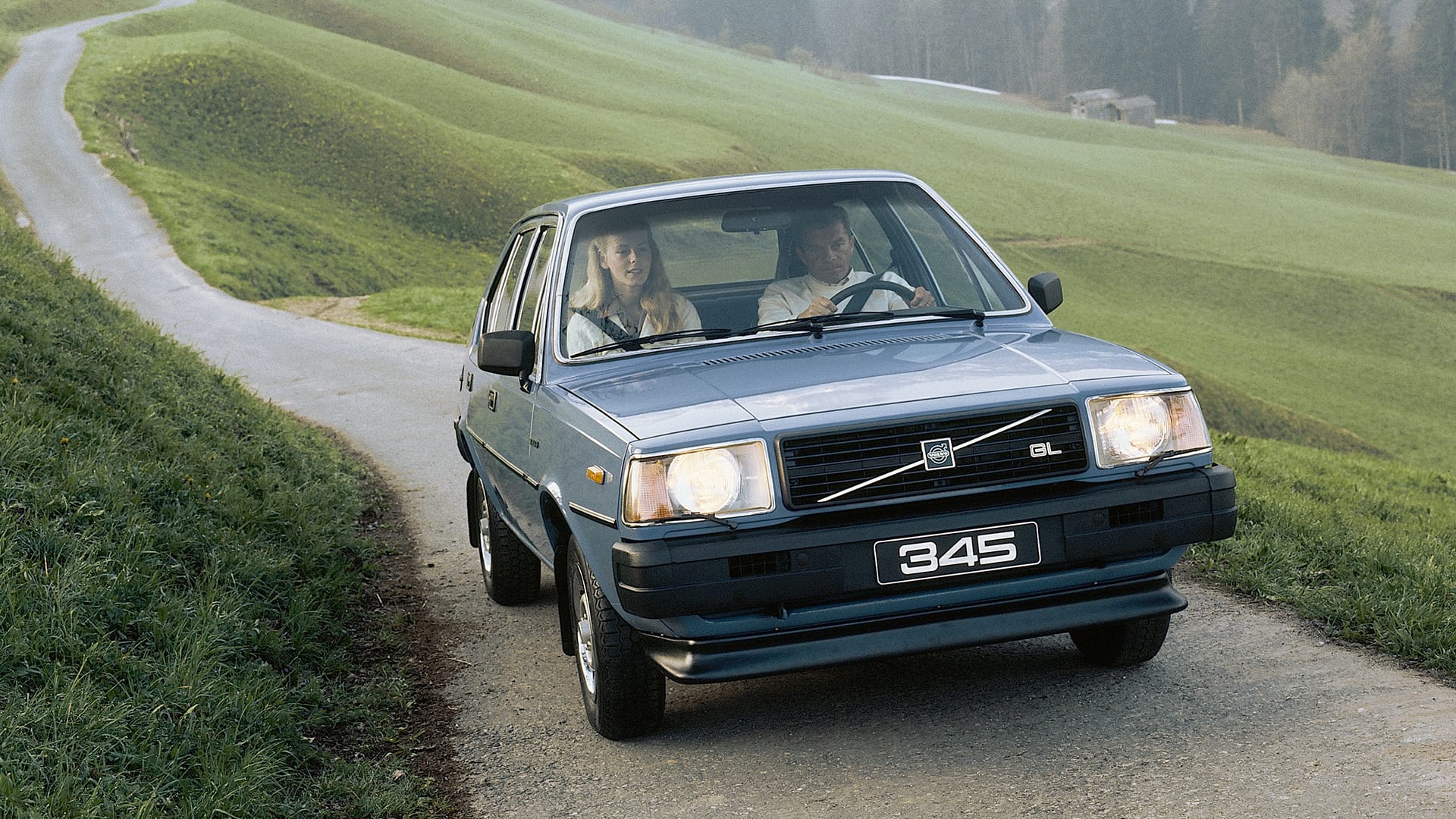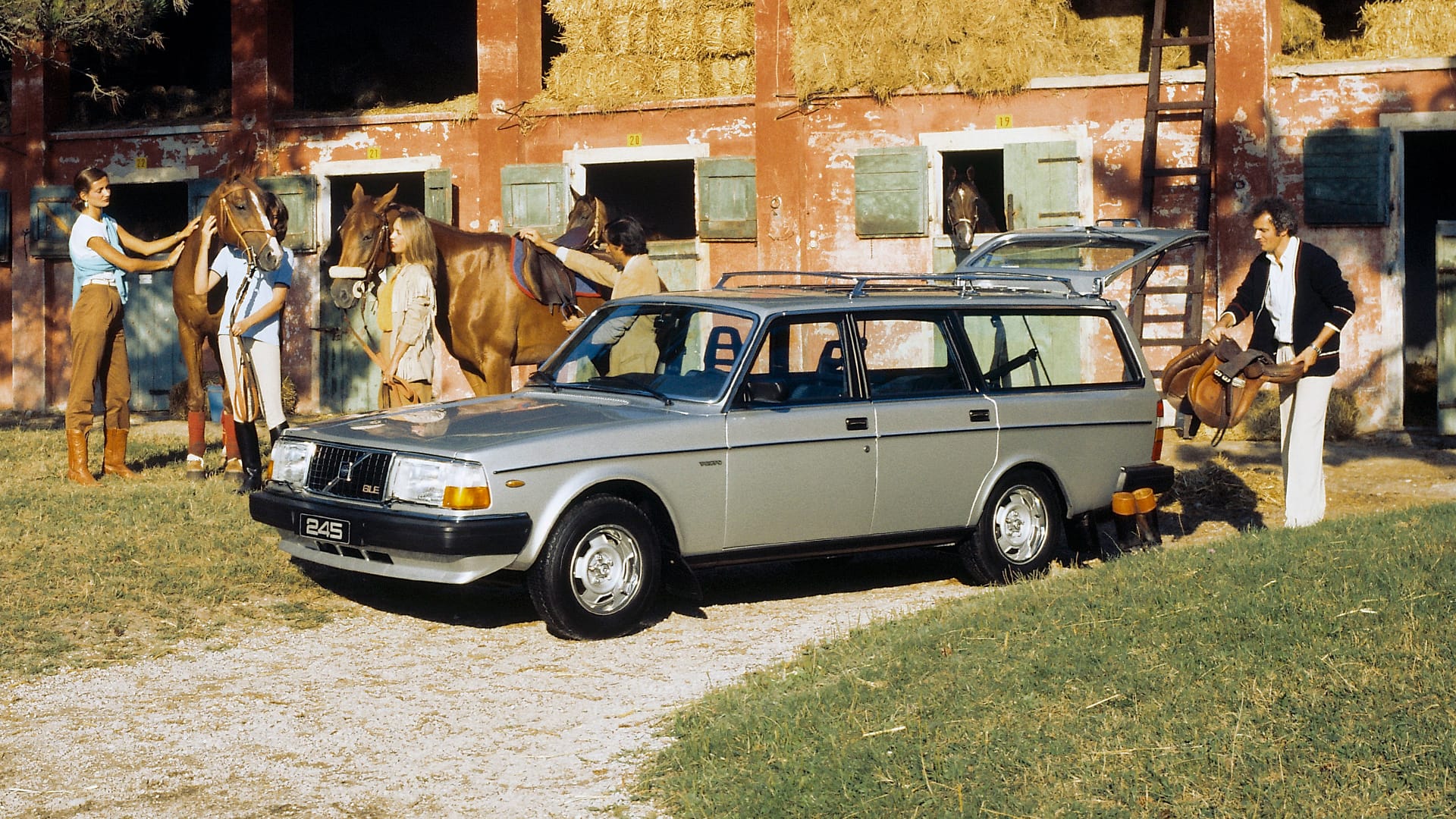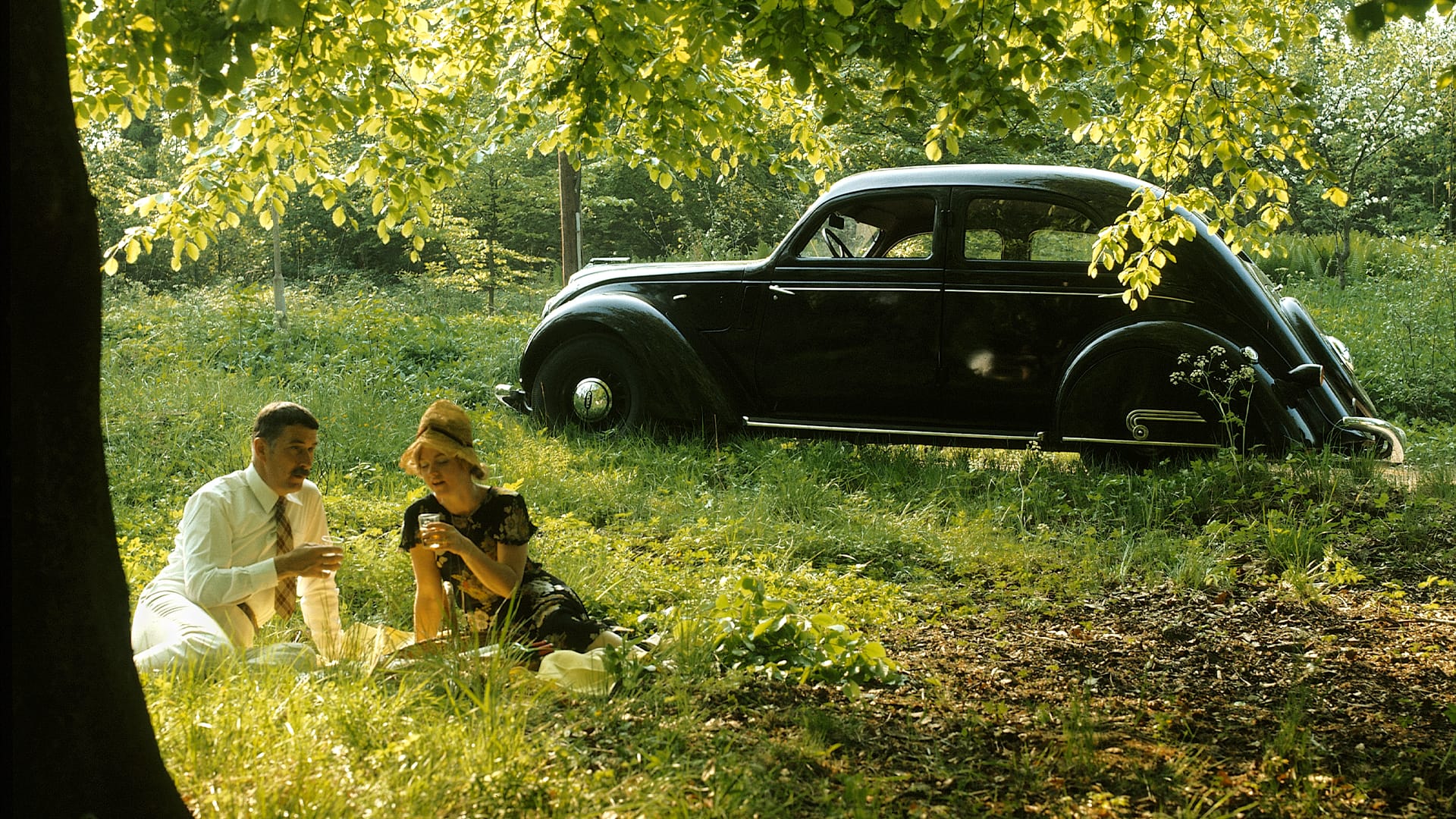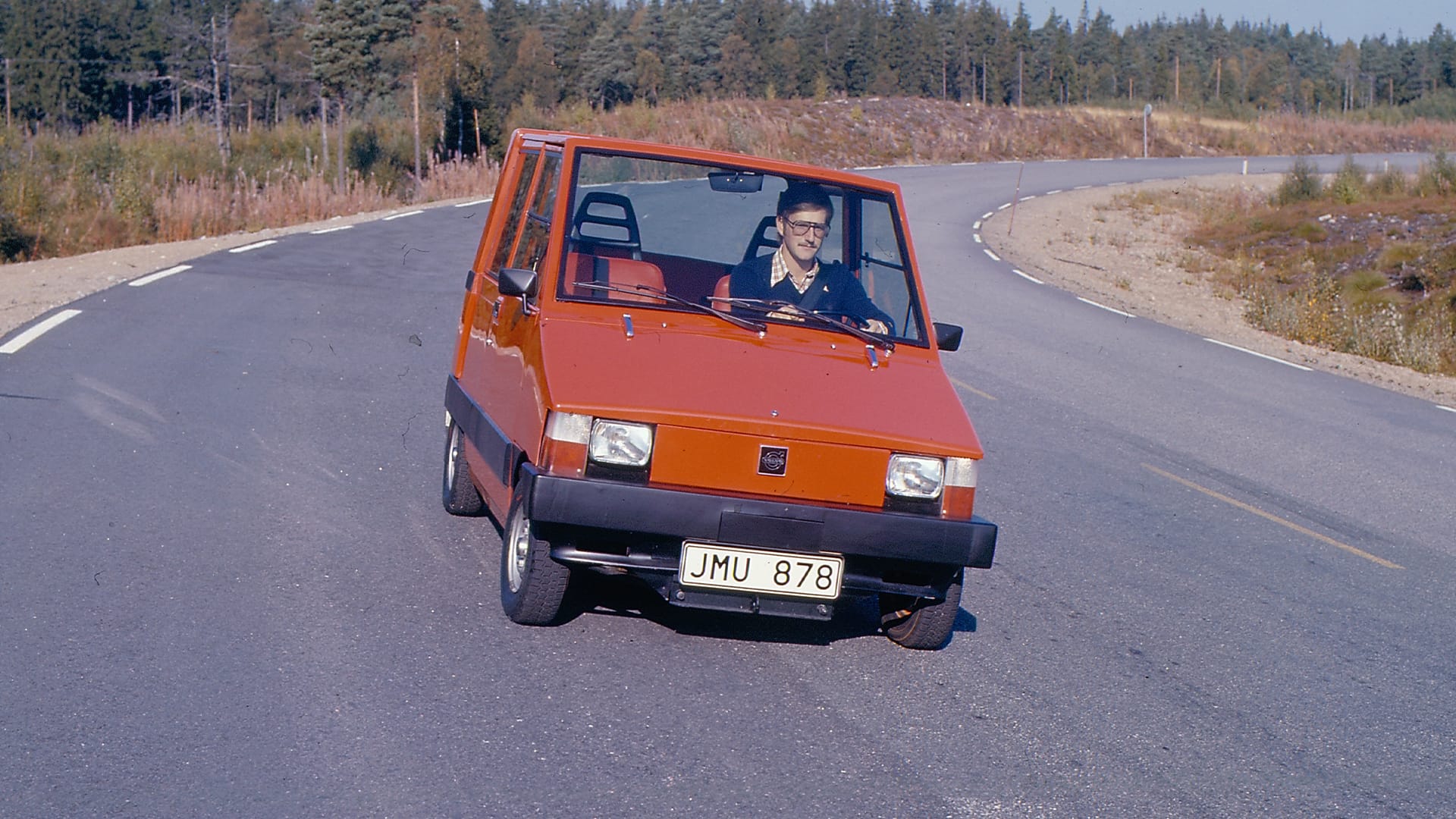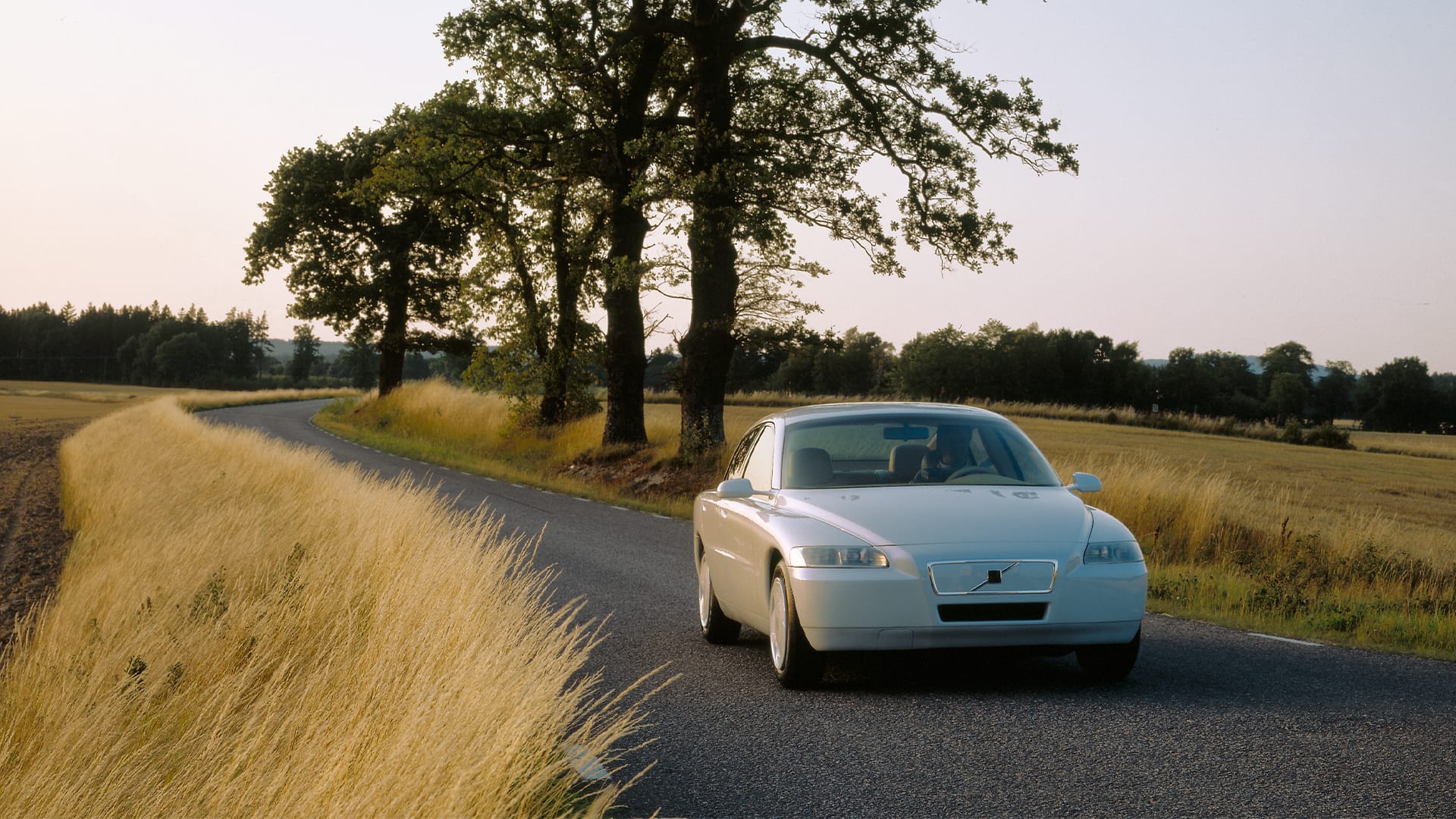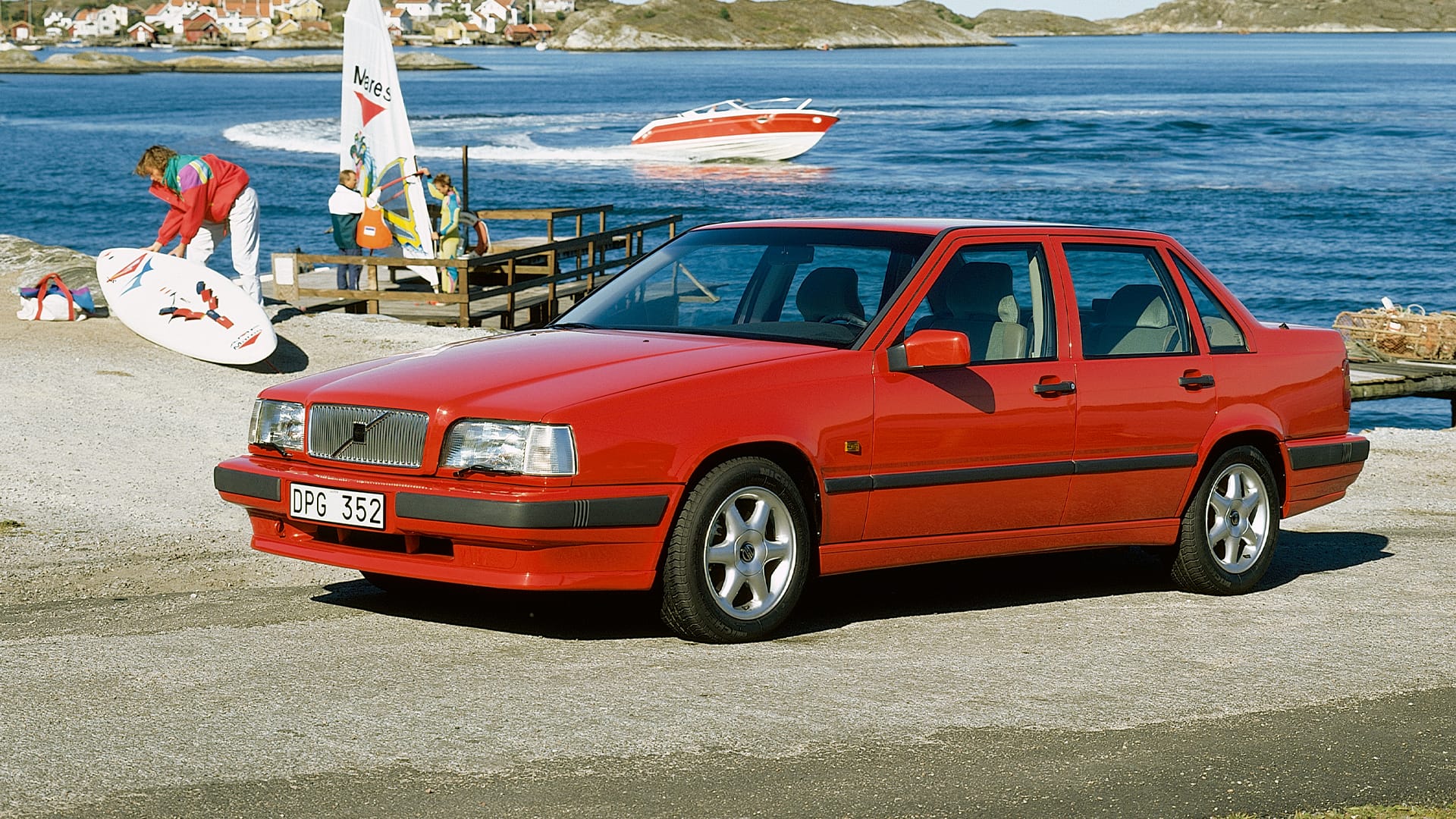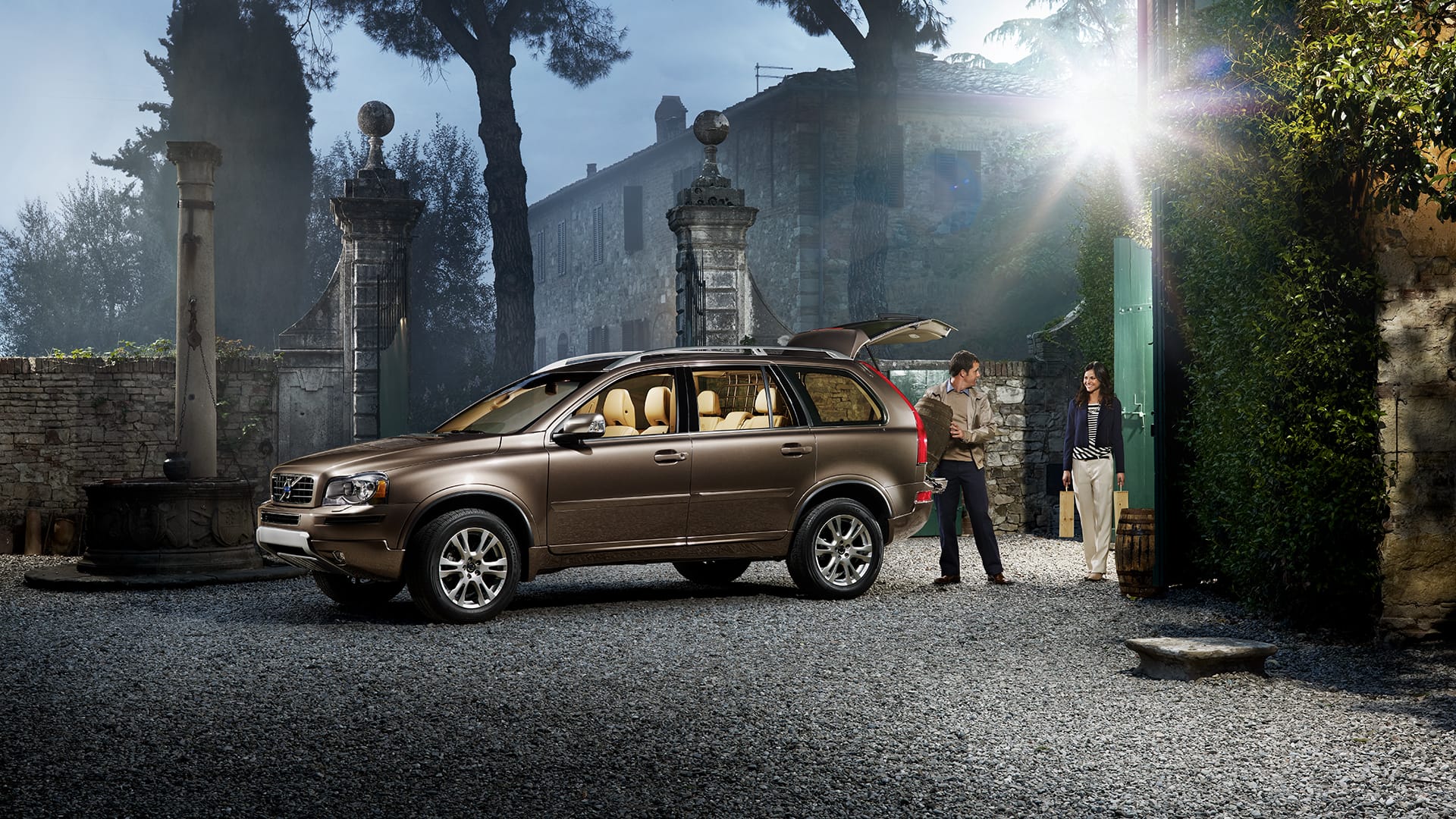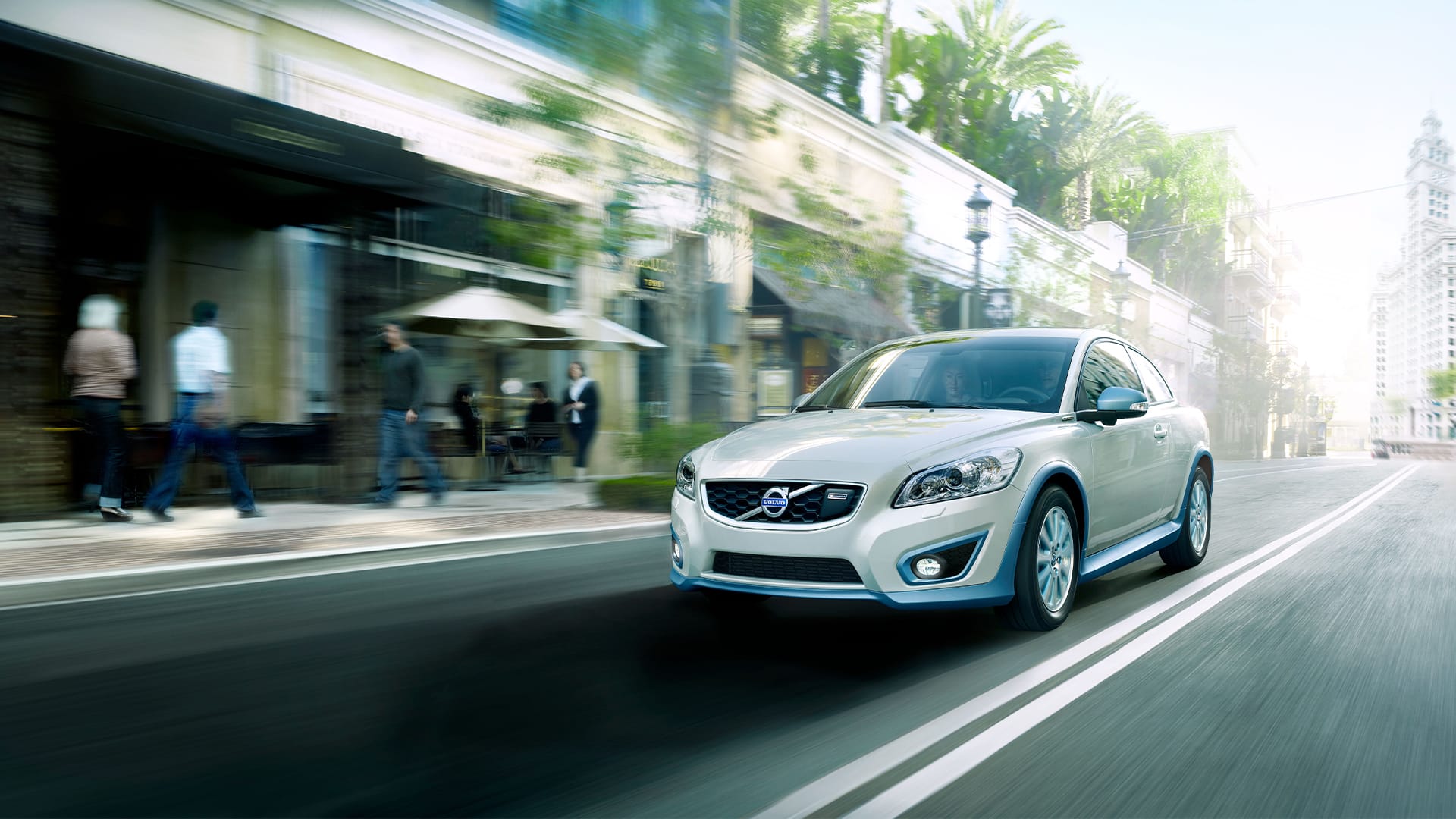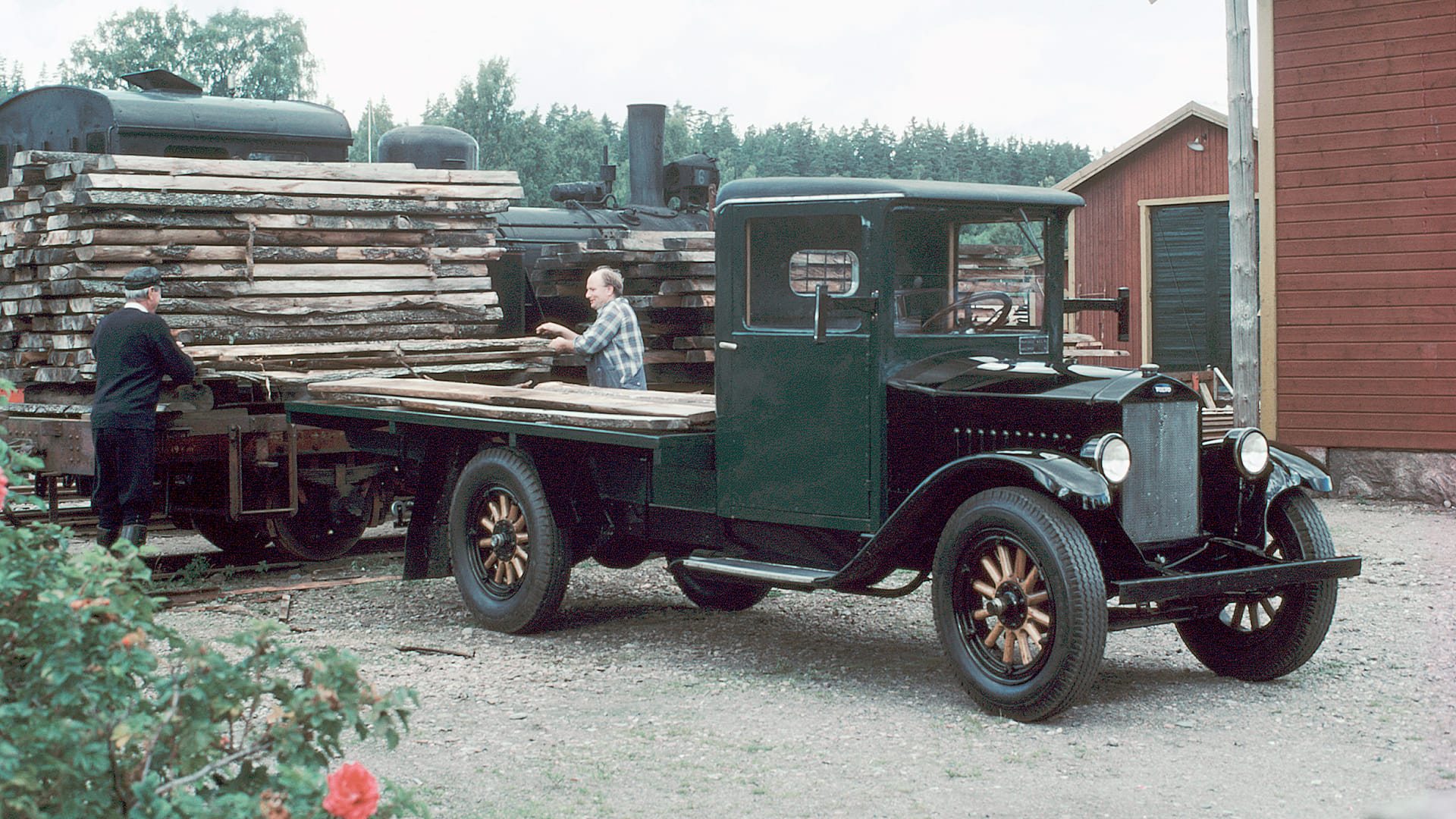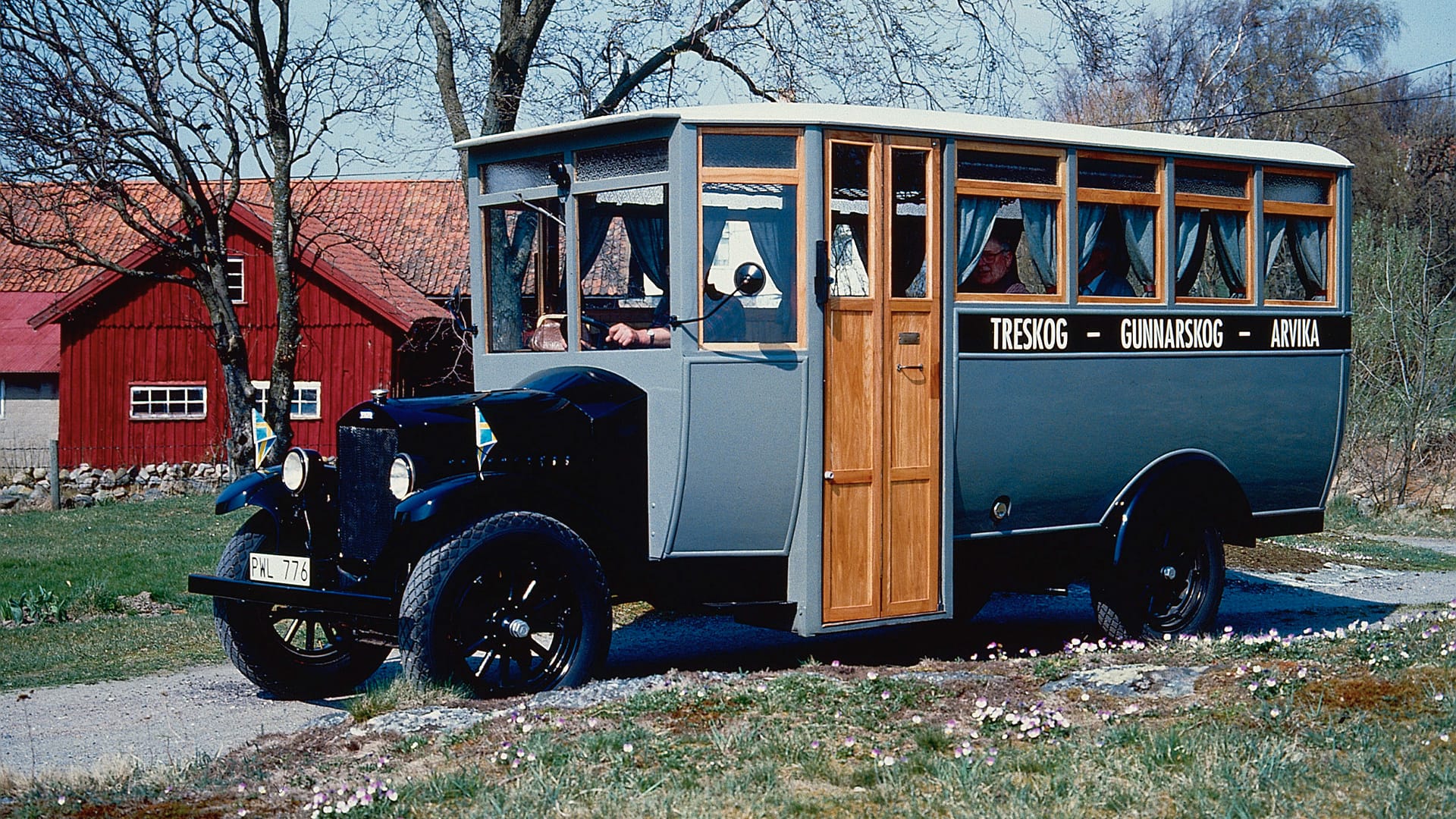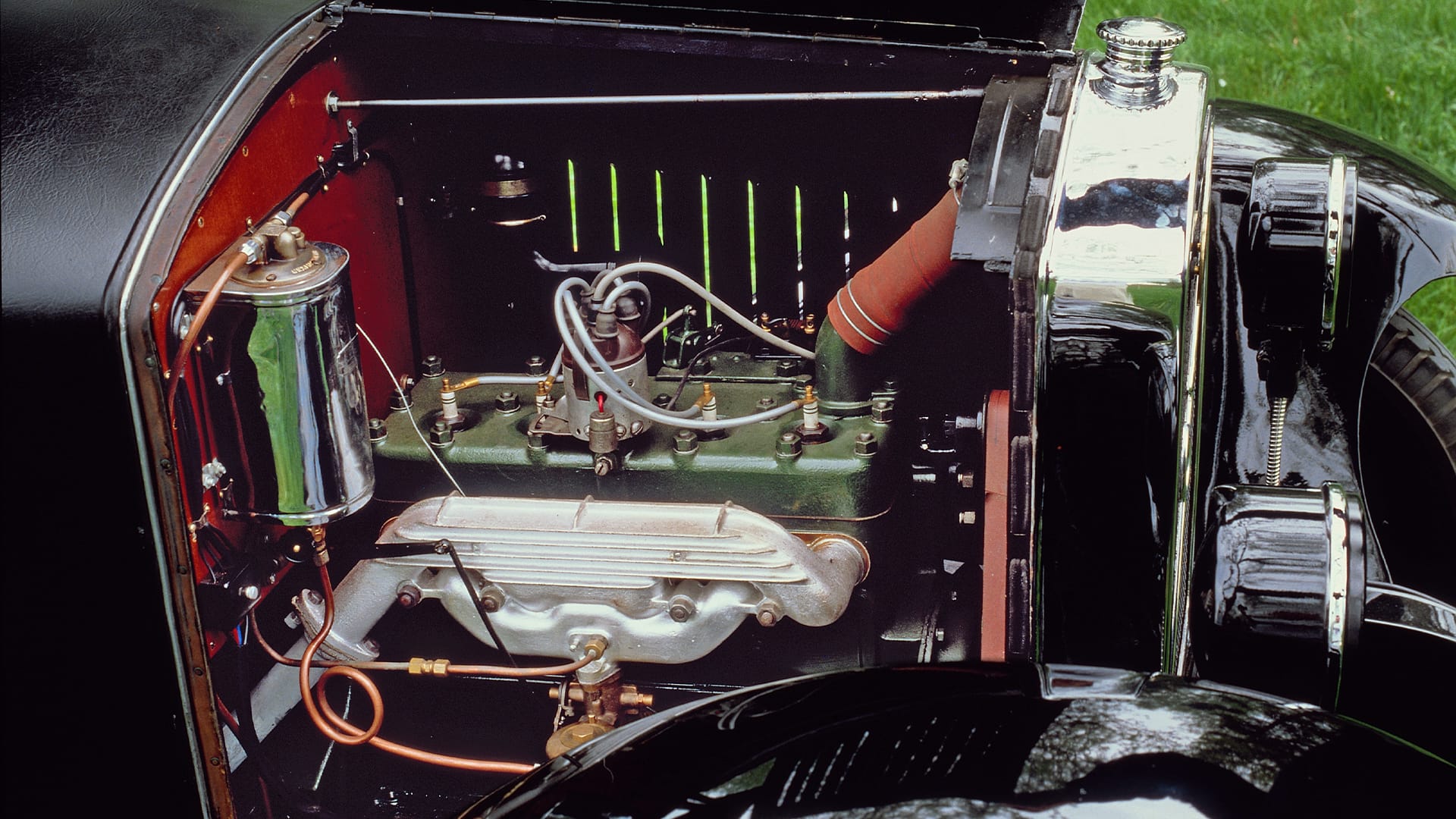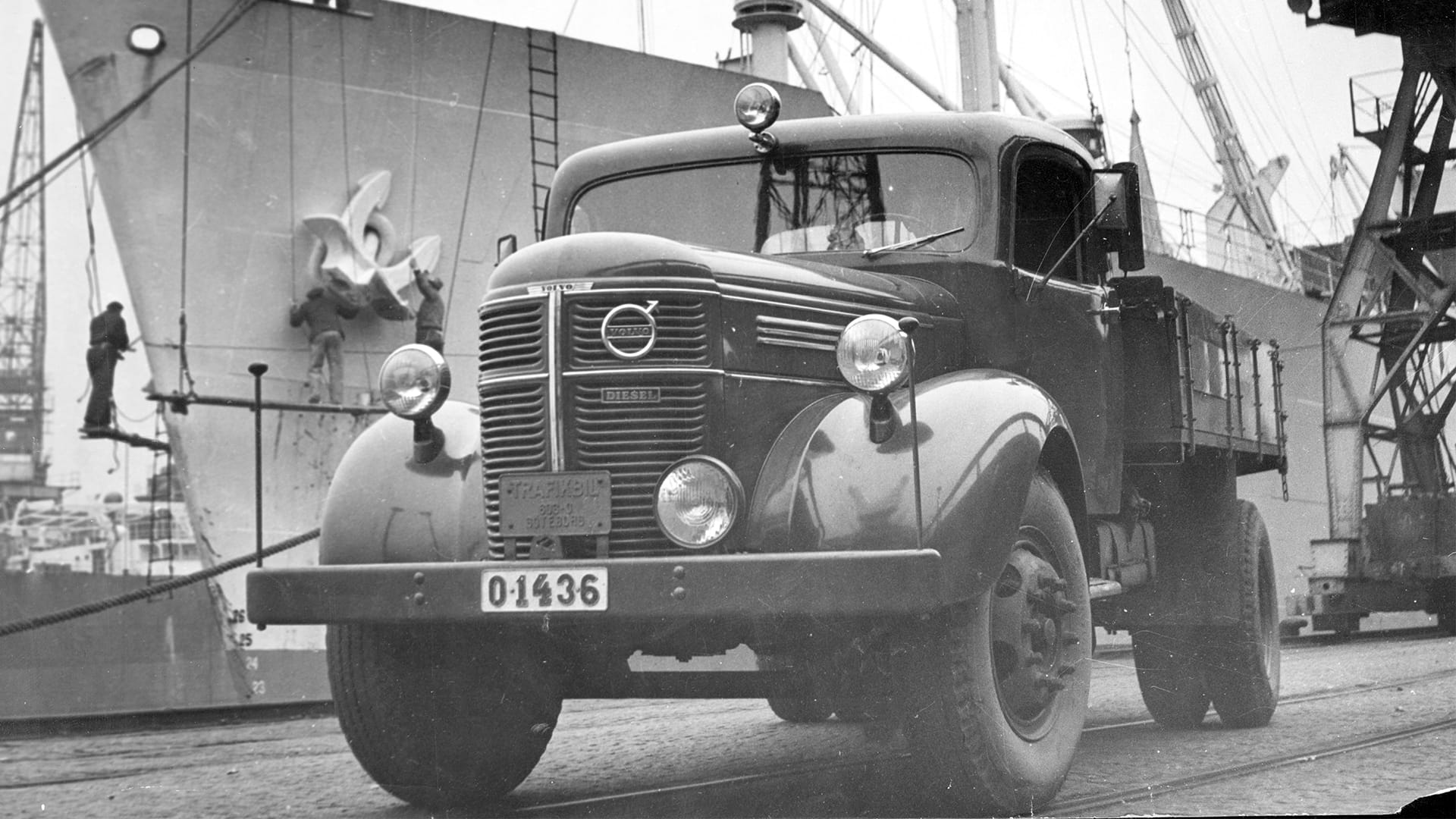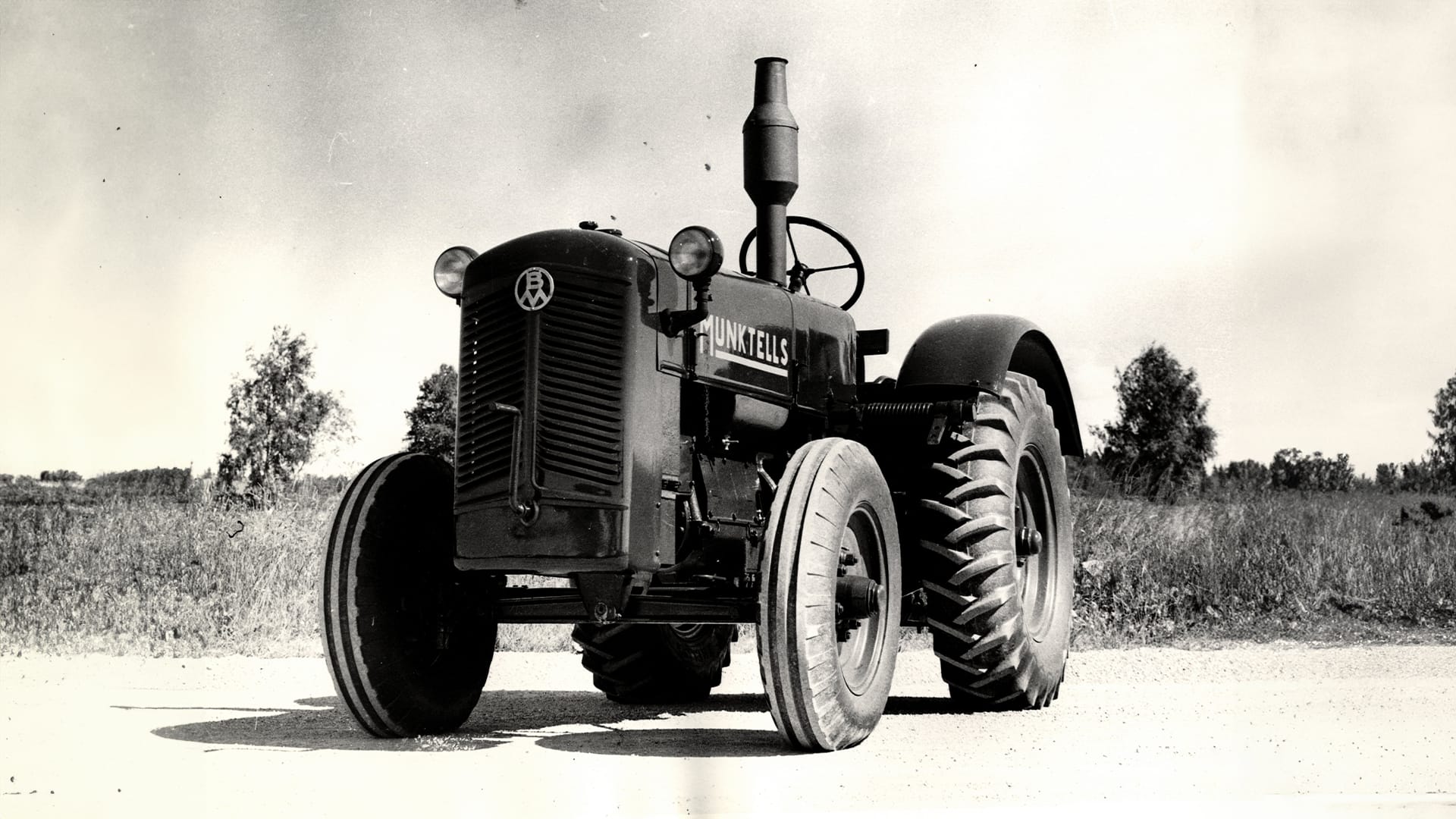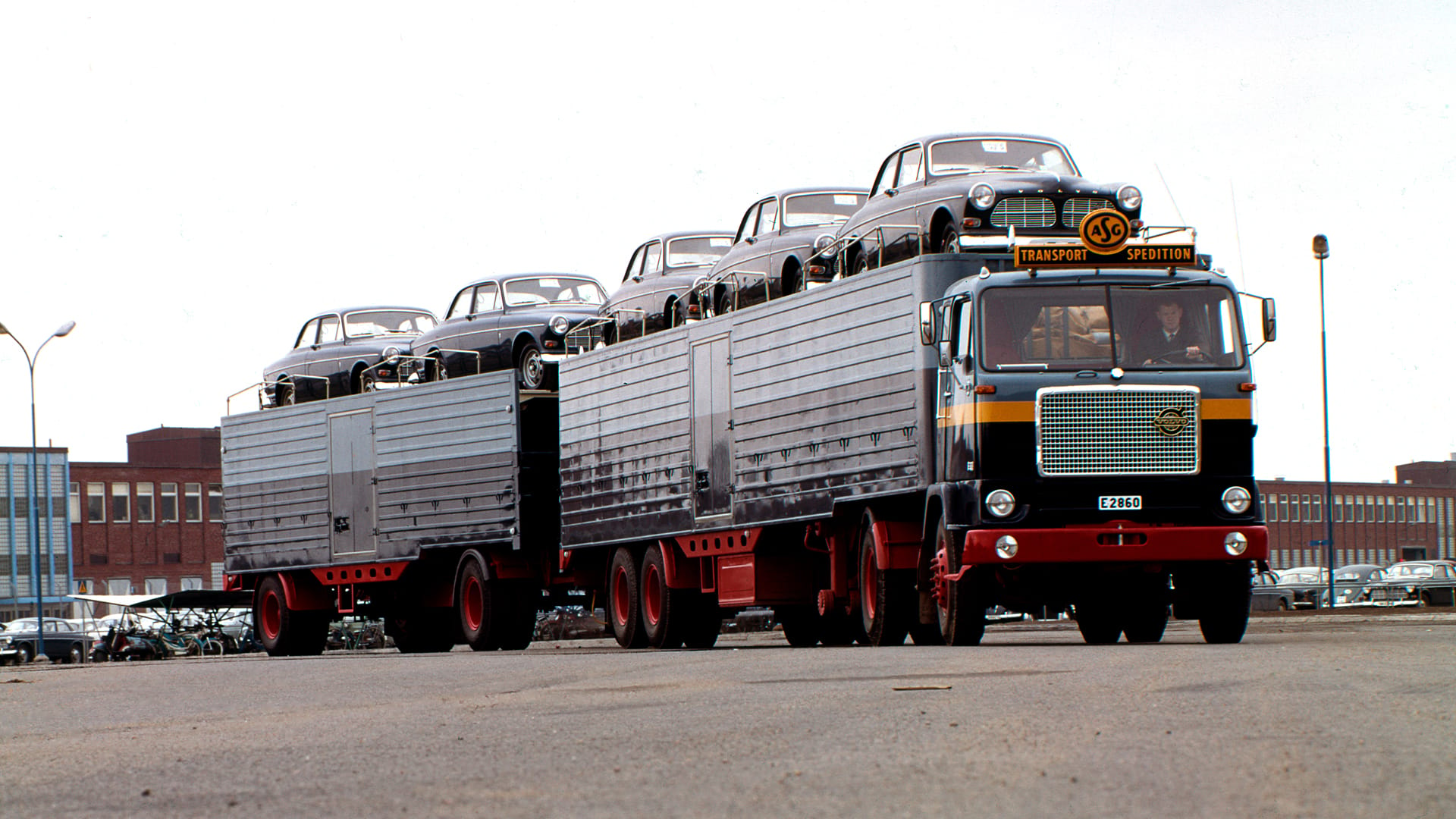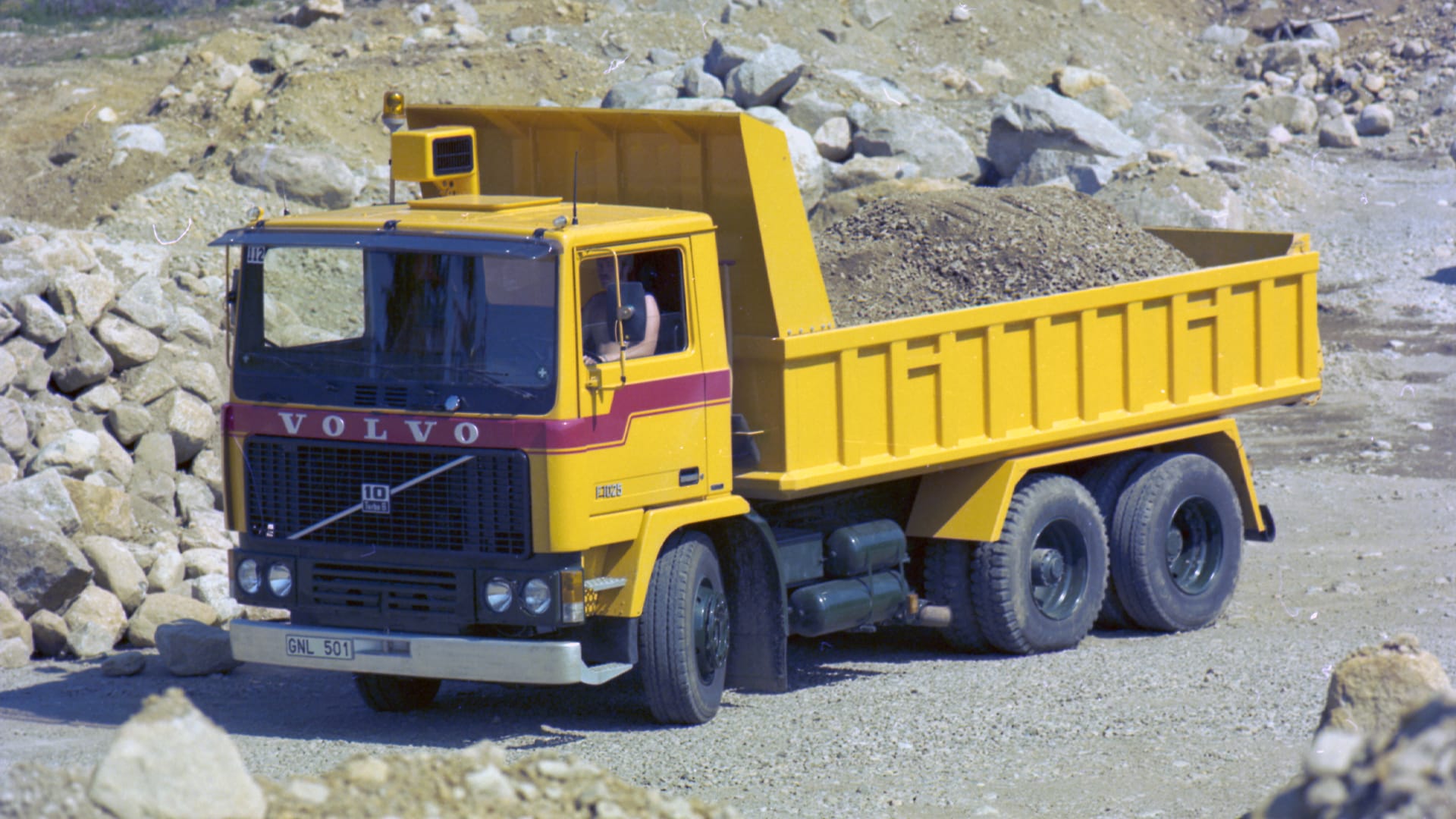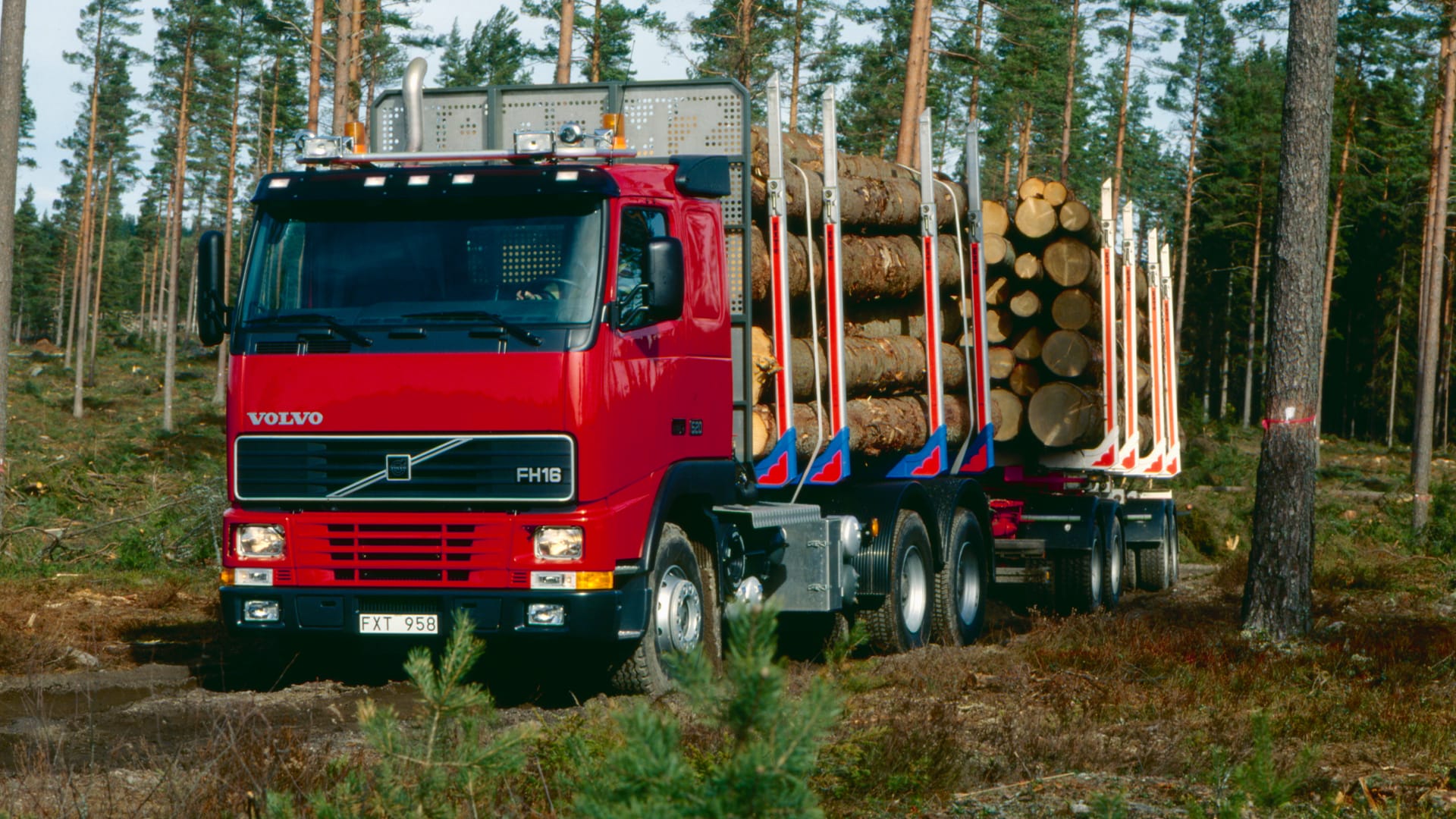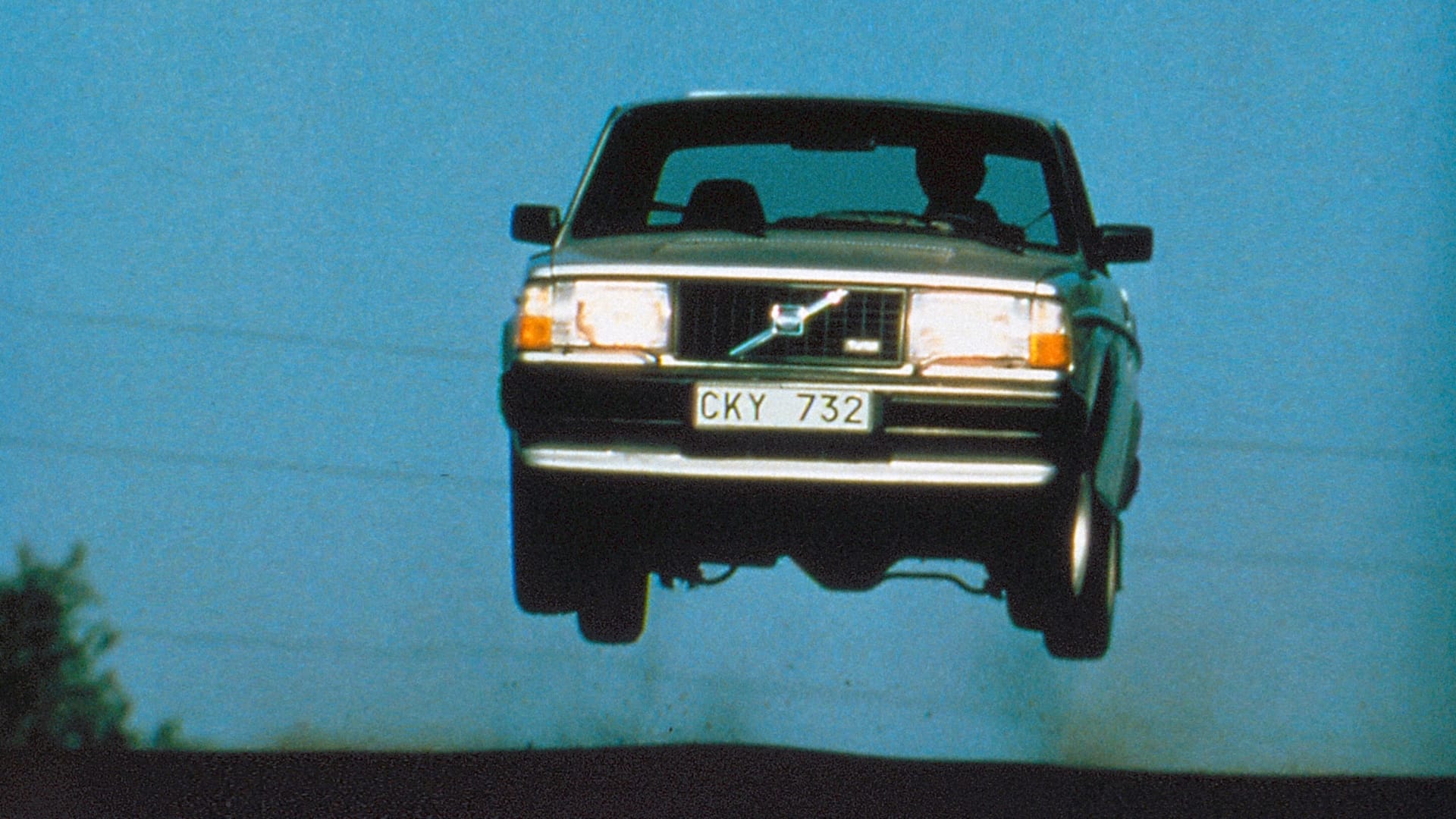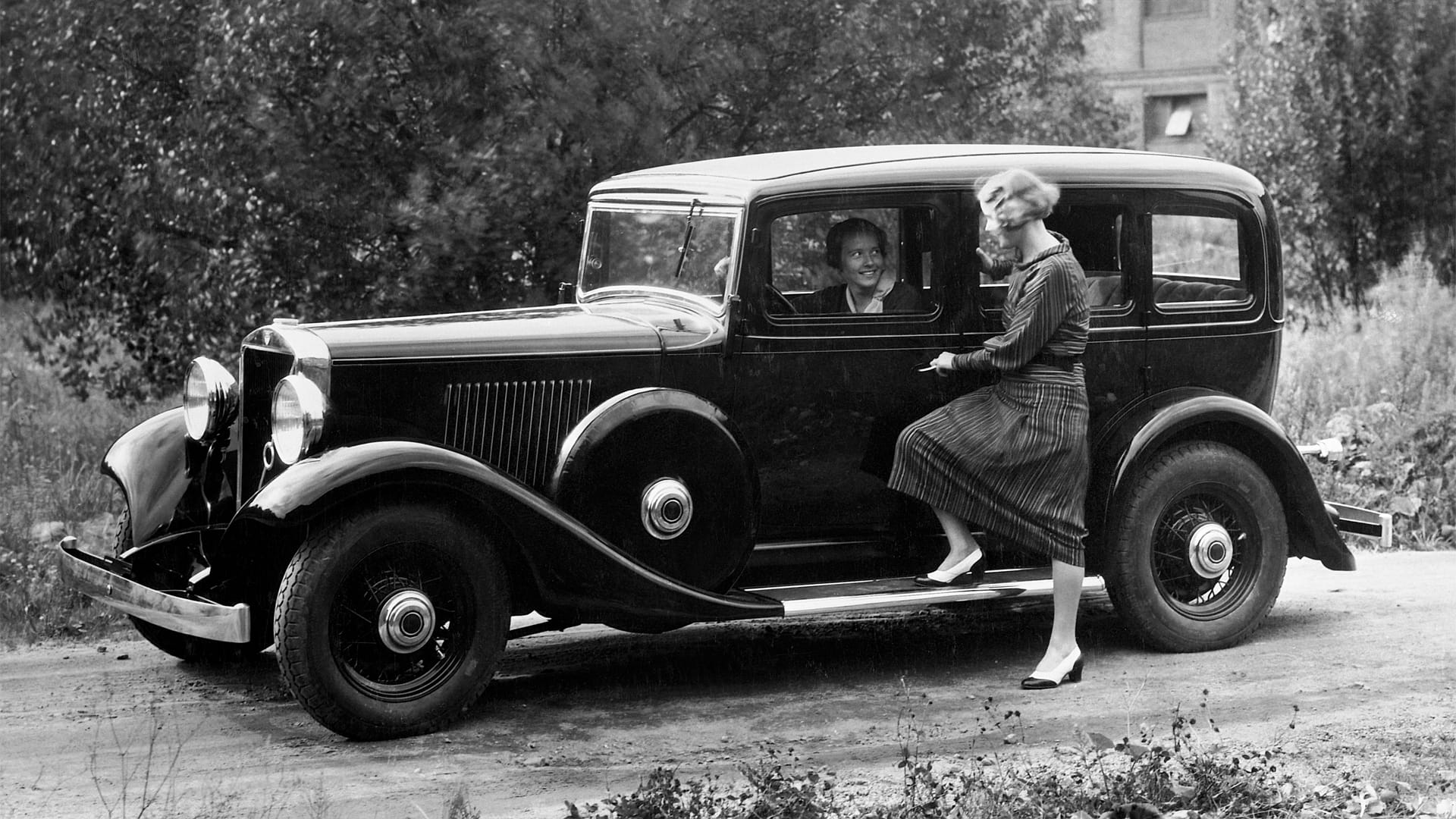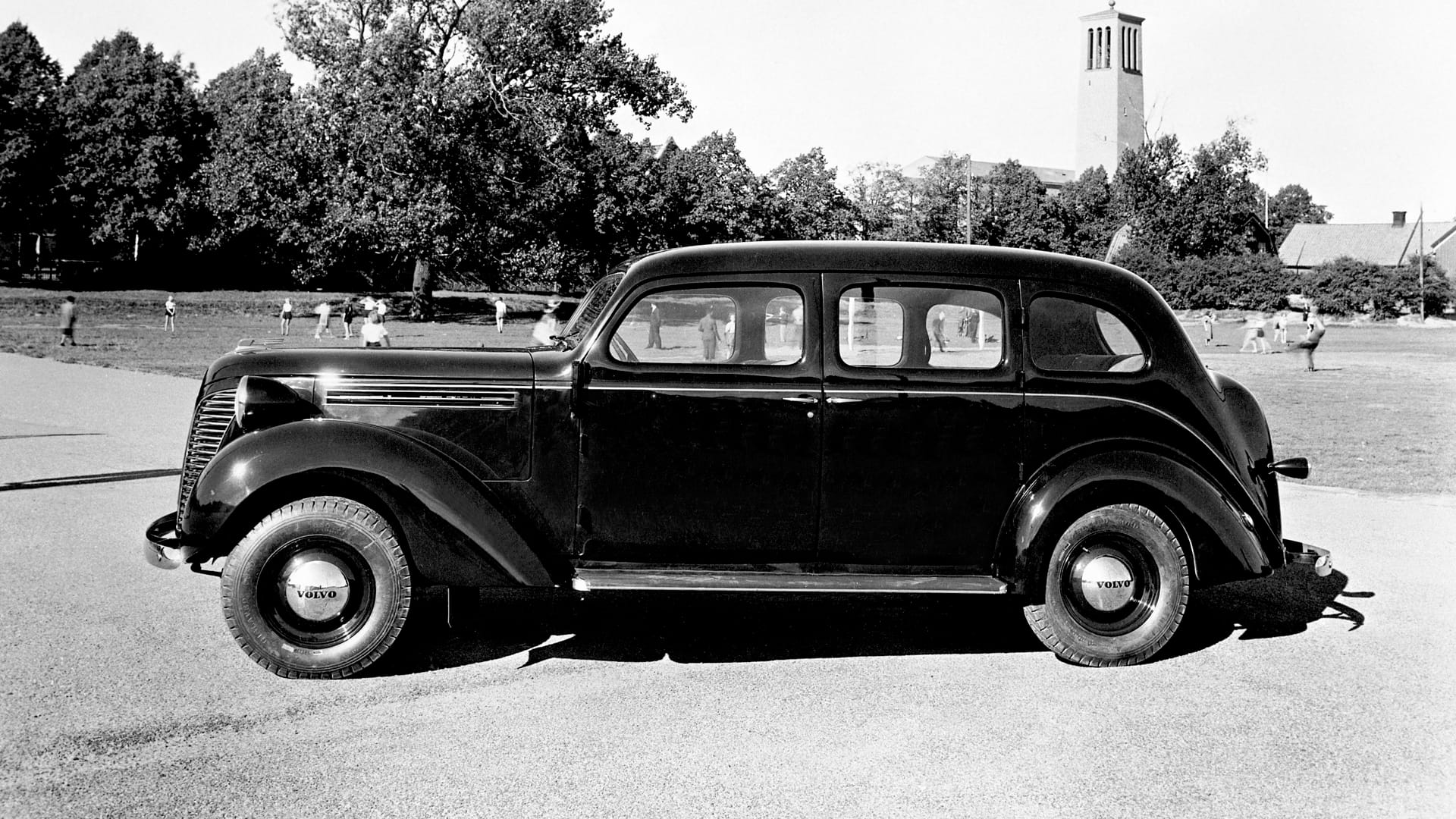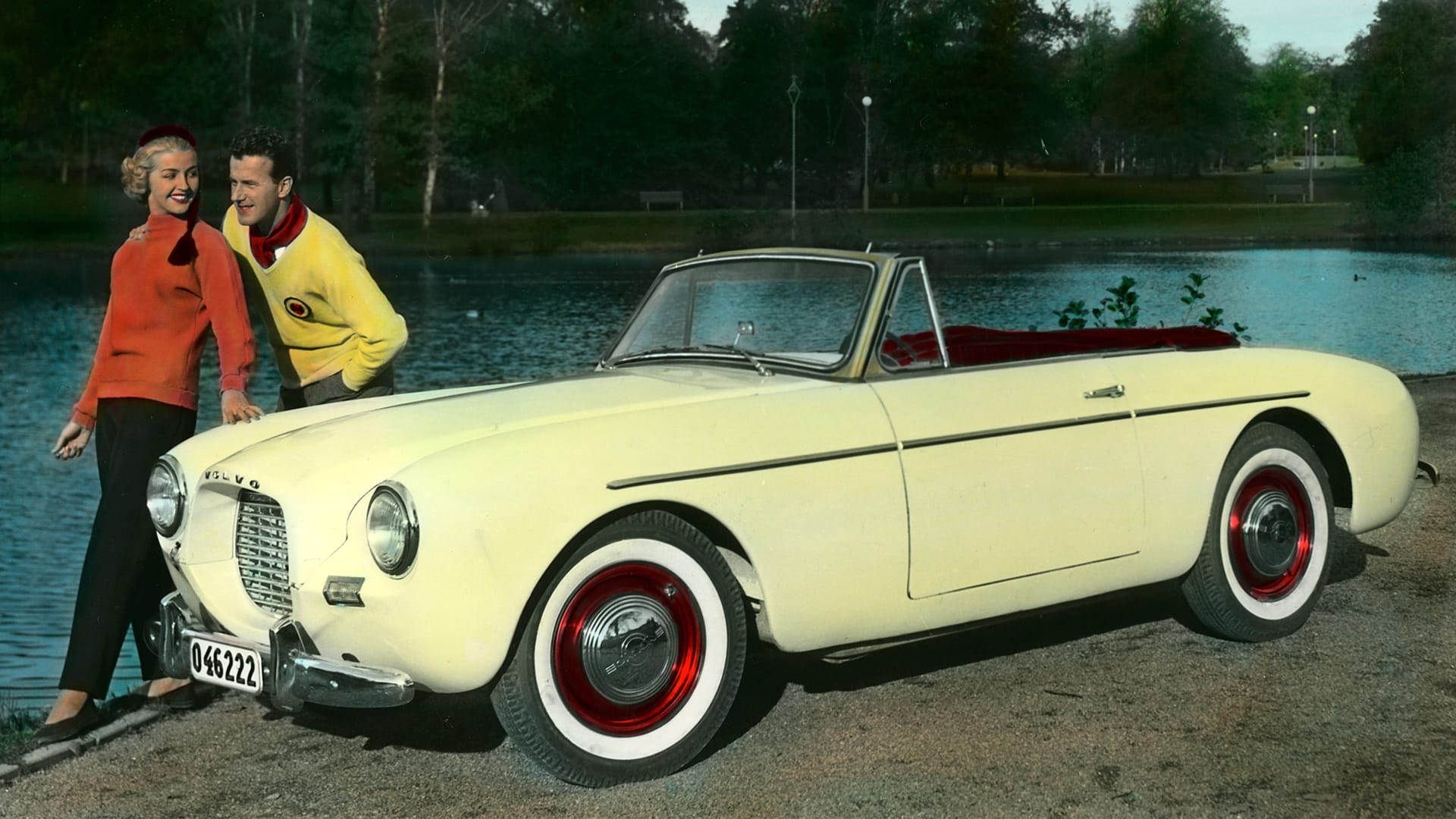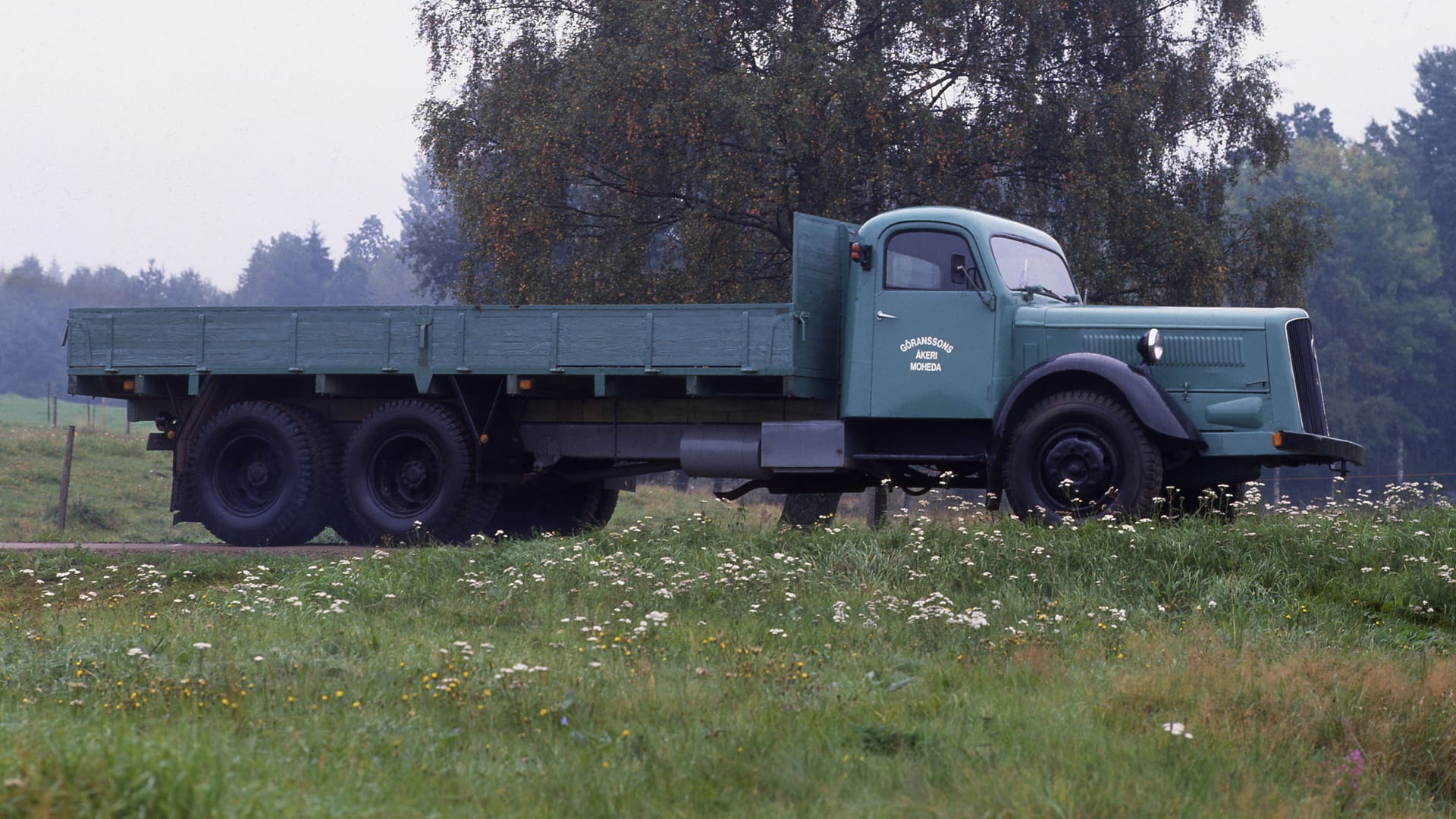Volvo B513
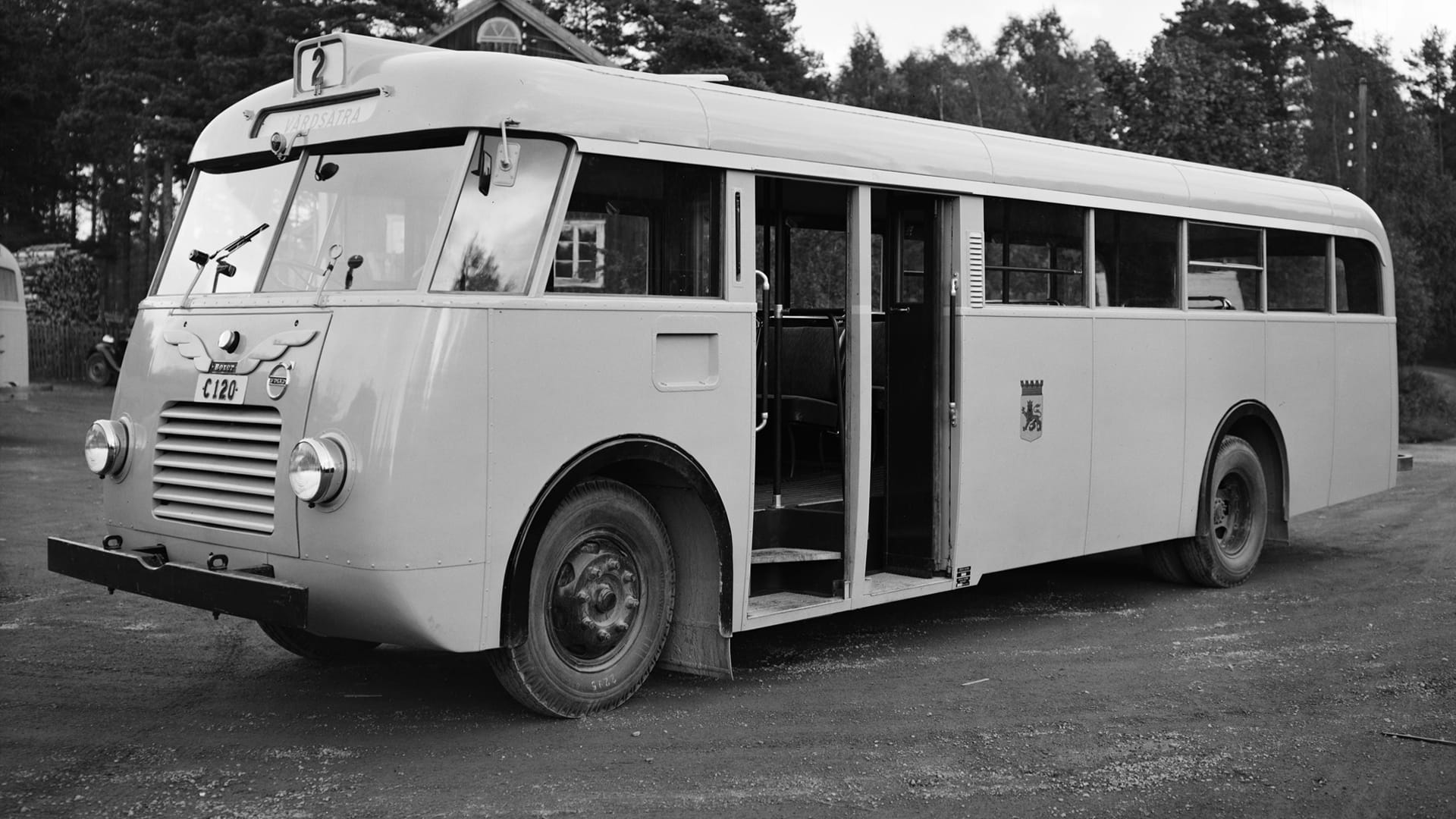
A bus — lost and found
In the 1950s, this bus operated in northwest Stockholm, then named SJ 850, SJ being the Swedish Railways. Delivered in 1945, it was the first bus Volvo built on a diesel chassis, powered by a 6.1-liter, 95-horsepower engine.
The body was crafted by Svenska Karosseri Verkstäder in Katrineholm. After an accident in the late 1950s, the bus underwent a complete renovation but was then left in Swedish Railway’s garage in Dalsjöfors, outside Borås—and forgotten. Over 20 years later, a group of enthusiasts discovered the bus, bought it for SEK 500, and after a few years of restoration, returned it to pristine condition. Note the distinctive gray textile roof!
A bus for the railroad
When the Volvo B513 model is introduced in 1945, this bus is the very first to be delivered, bearing chassis number 2. Chassis number 1 is a prototype that never reaches a customer. The bus is ordered by Svenska Omnibus AB in Sundbyberg, a subsidiary of the Stockholm–Västerås–Bergslagen Railway (SWB). However, the railway is nationalised the same year, and the bus ends up with the State Railways' Bus Division (Statens Järnvägar, SJ). This is why it is painted in SJ's yellow colour, features a green decorative stripe, and operates as an SJ bus.
From wood gas to freedom on the road
The bus undoubtedly arrives at just the right time. During the Second World War, also the Swedes face shortages of many goods, with rationing and price controls defining daily life. When the war breaks out in 1939, between 50 and 75 per cent of pre-war bus services are suspended. On top of this, several buses are requisitioned by the military. Many buses during the war run on wood gas, a method that poses health risks for both drivers and passengers. When the diesel-powered Volvo B513 bus arrives just as the war ends, it is widely seen as a much-needed relief.
After the war, the Swedish economy steadily improves, and people’s appetite for travel grows. By 1950, the real wages of industrial workers are 30 per cent higher than they were at the end of the war just five years earlier. In the early 1950s, the holiday allowance is extended to three weeks, giving people more time to explore and travel.
A workhorse forgotten in the garage
Bus 513 is equipped with a six-cylinder engine, boasting a capacity of 6.13 litres and delivering 95 horsepower. It has a four-speed gearbox, rear-wheel drive, and weighs 9,500 kilos. When used for local services on Route 3 in Hässelby, Stockholm, it covers no more than 150 kilometres per week, so wear and tear are minimal.
However, in the late 1950s, the bus is involved in a serious accident and requires repairs at SJ’s workshops in Örebro. While there, it is given a new front with a design more typical of the 1950s and undergoes further refurbishment. Despite the restoration, it never returns to regular service. Instead, it is sent to SJ’s bus depot in Dalsjöfors, just outside Borås. There, it is forgotten and left to stand idle until 1980, when SJ closes the depot.
The old 45 gets a new life and its own club
This gives Bus 513 an unexpected chance at a new life. The staff at SJ Busstrafik in Borås decide they want to take care of the bus and restore it. Despite having been parked in a garage for more than 20 years, its condition is surprisingly good. By September 1981, it is registered again with the new number plate BHS 856, though the old plate, B649, still remains on the bodywork.
When SJ celebrates its 75th anniversary in 1986, the restoration is complete, and the bus is back in pristine condition. SJ remains the official owner, but when Swebus merges with GDG in 1990, the bus – now affectionately known as ""Gamla 45-an"" (""The Old 45"") – becomes part of the Swebus museum collection. At the same time, Club Gamla 45-an is formed, dedicated to caring for the bus and organising outings. Initially, membership is restricted to SJ employees, but over the years, this rule is relaxed, and now anyone can join. The club has around 50 members, many of whom are former drivers from SJ and Swebus.
A beloved bus for a bargain
Eventually, Swebus decides to part with all its old buses, and in 2003, the club is offered the chance to buy it for SEK 500. However, it should be remembered that the club’s members have already invested countless hours of work to restore the bus to its excellent condition. Surprisingly, the interior has required very little attention. The seats still have the same upholstery as in 1945, although they’ve been reconditioned at some point. The engine has been refurbished, the luggage racks rewrapped, and the roof replaced. Just as when it was first delivered, the roof is made of fabric that is painted to withstand rain and snow.
A left-side challenge with vintage charm
Since the bus has never been in service since Sweden changed to right-hand traffic in 1967. Therefore it is right-hand drive, and the entry door is on the left side. Upon stepping on board, passengers are greeted by the mechanical ticket machine, a National model, which weighs around 40 kilos.
Driving the bus isn’t exactly straightforward. It lacks power steering, and with vacuum brakes, considerable muscle power is needed to both steer and brake. The gearbox is unsynchronised, meaning the driver has to double-clutch. The top speed is 55–60 km/h.
The old 45 keeps on rolling
The bus makes appearances at various meetups and vintage car events and even pops up in the 1989 TV series Sparvöga. These days, when it’s on display, it’s sporting new front tyres and a partial repaint. A couple of years ago, during a vintage car rally, it had a little mishap on a narrow gravel road – the second accident in Gamla 45-an’s long life.
